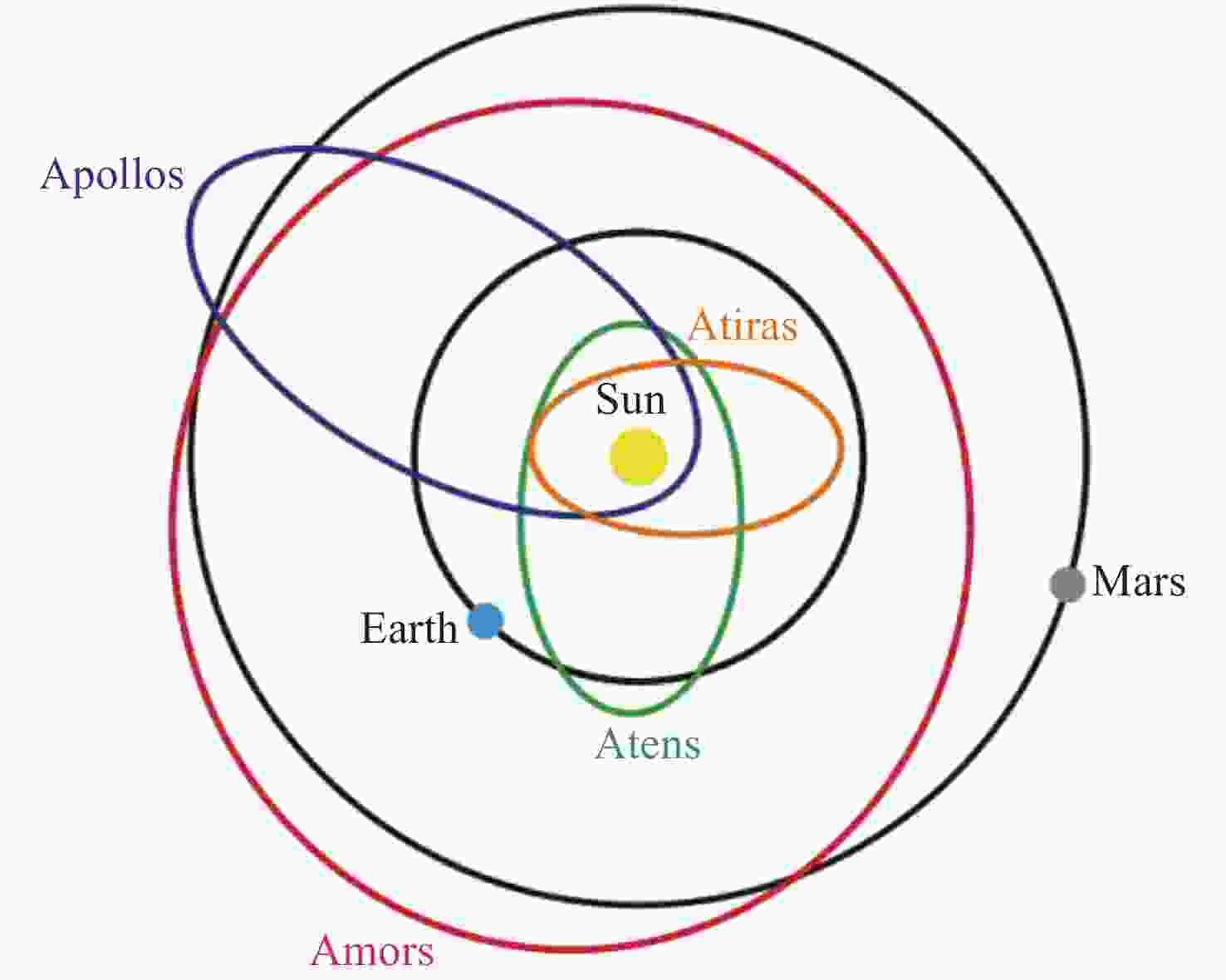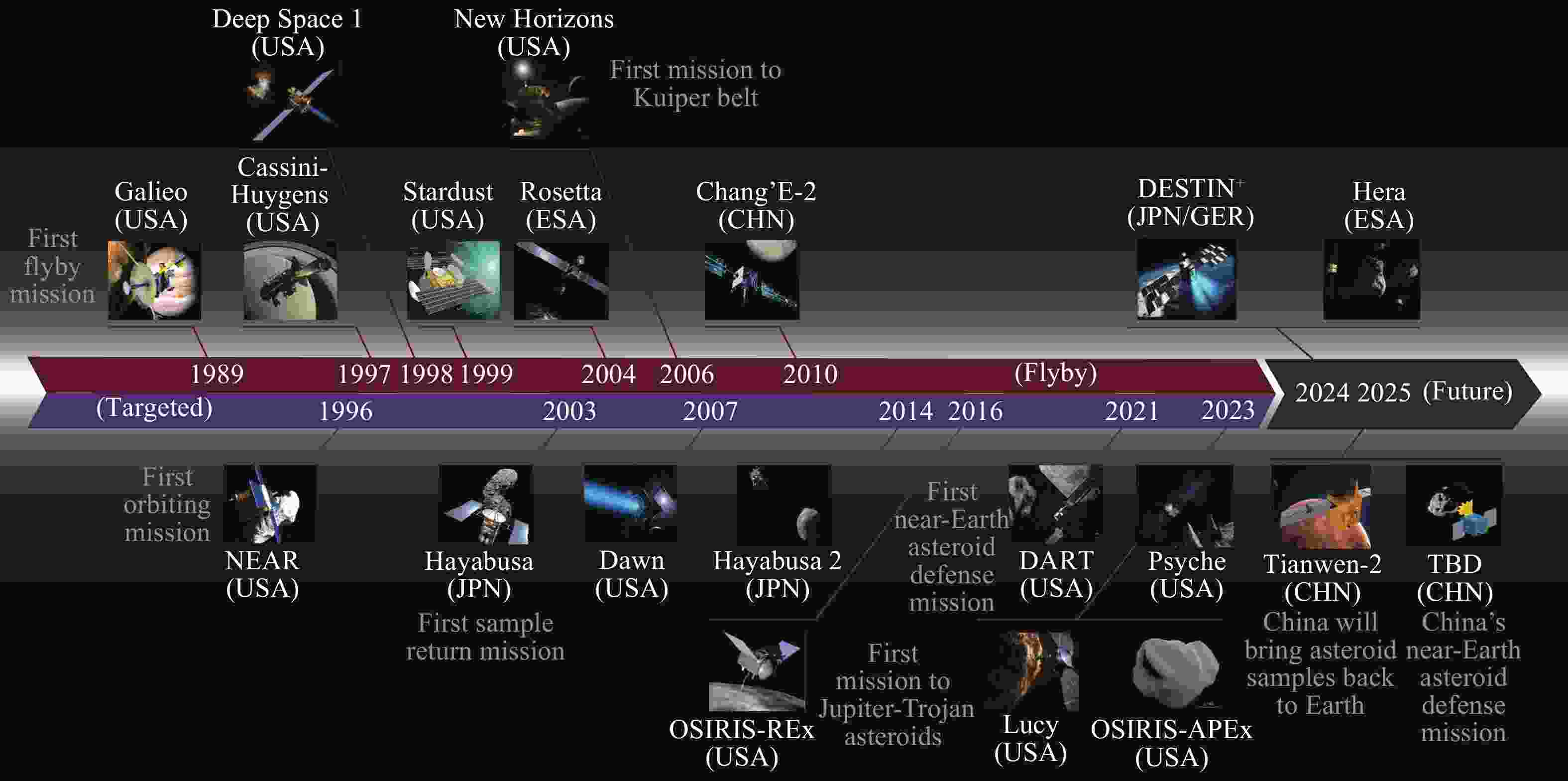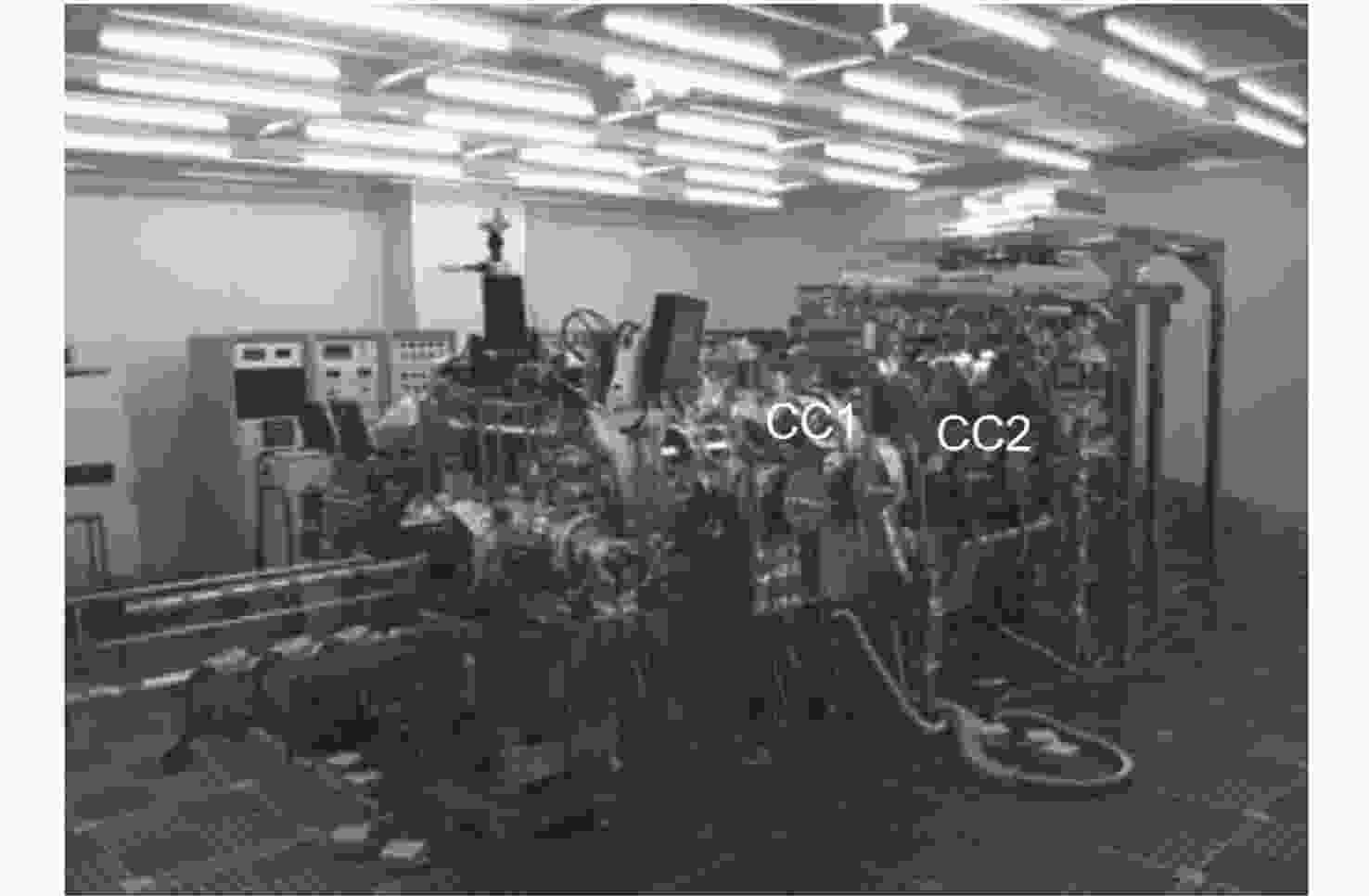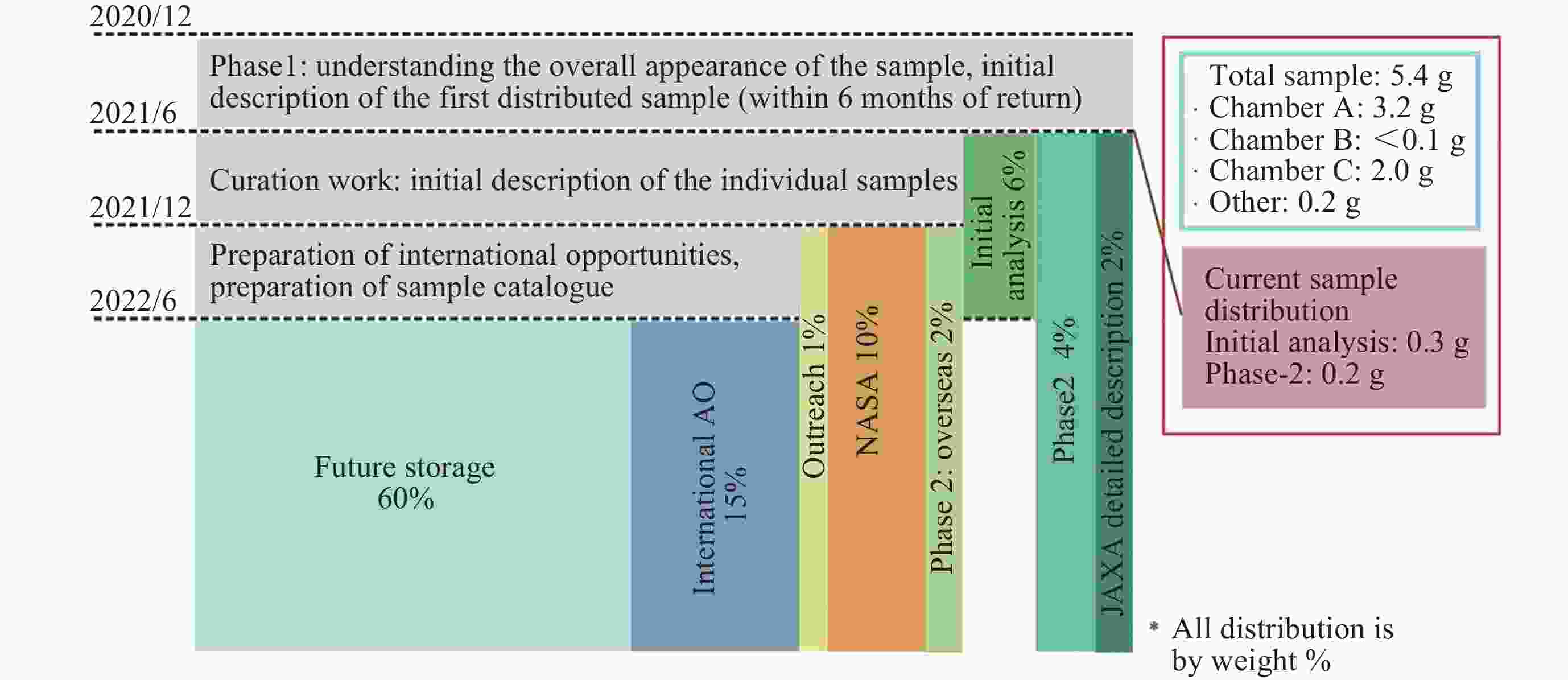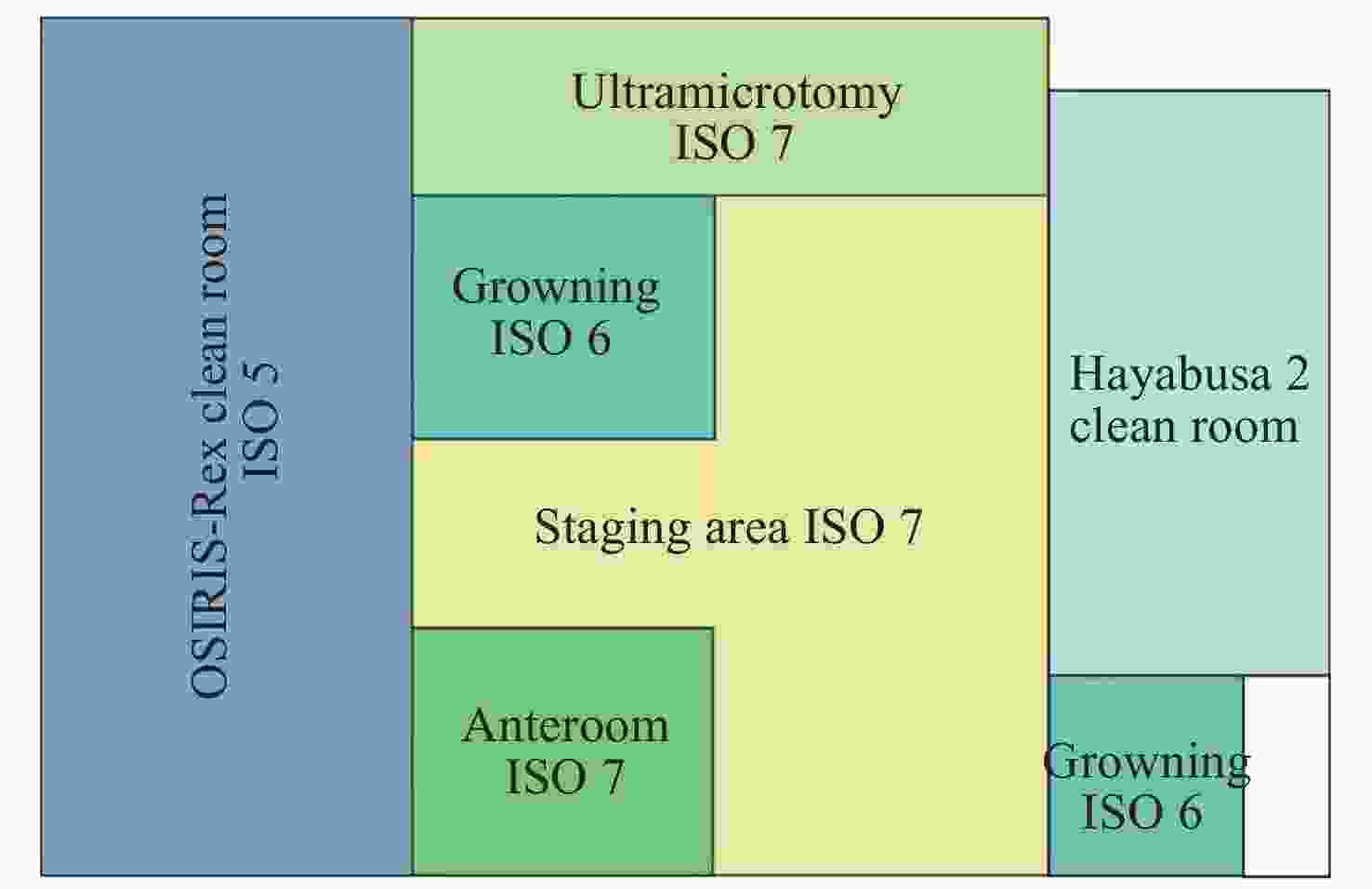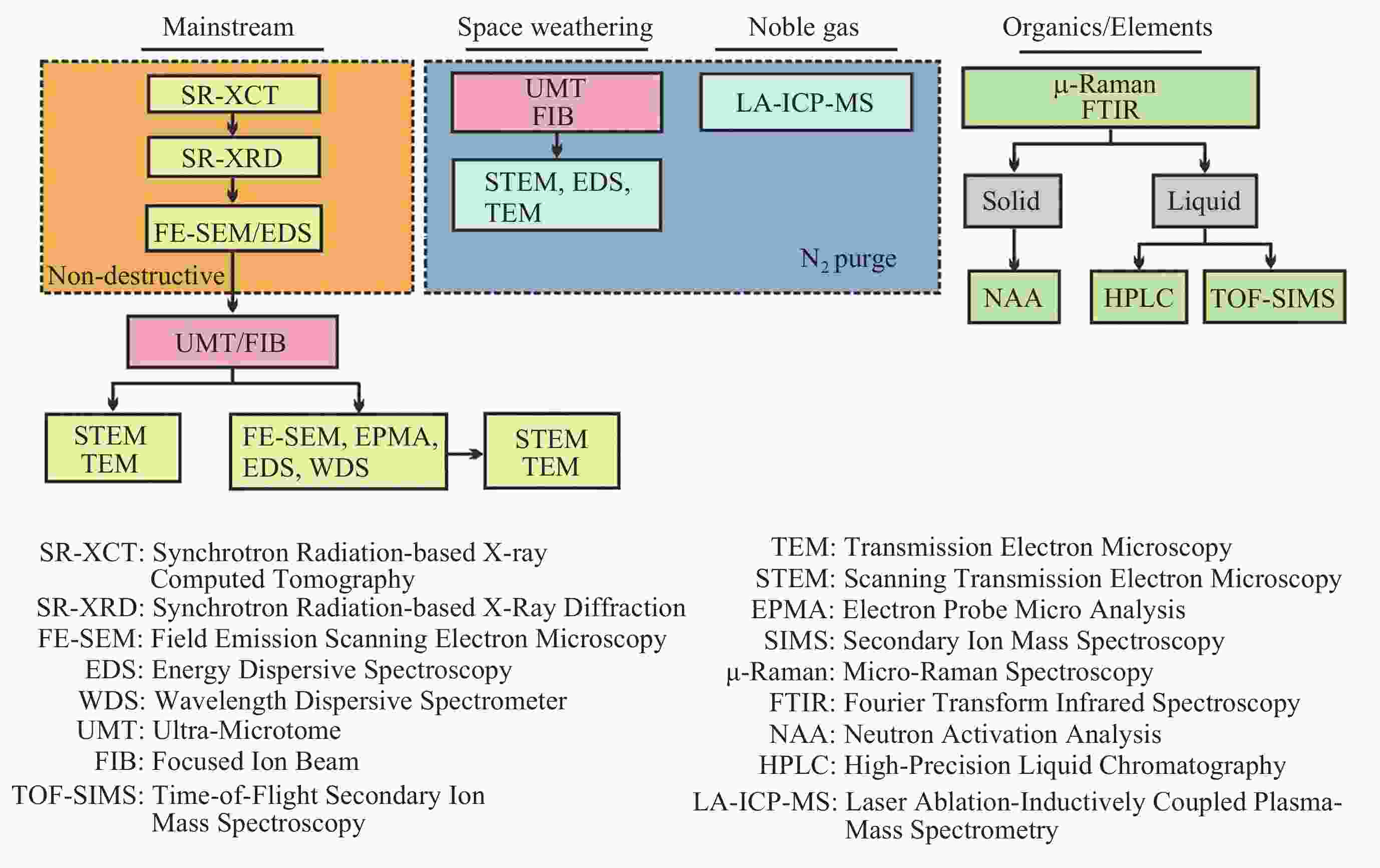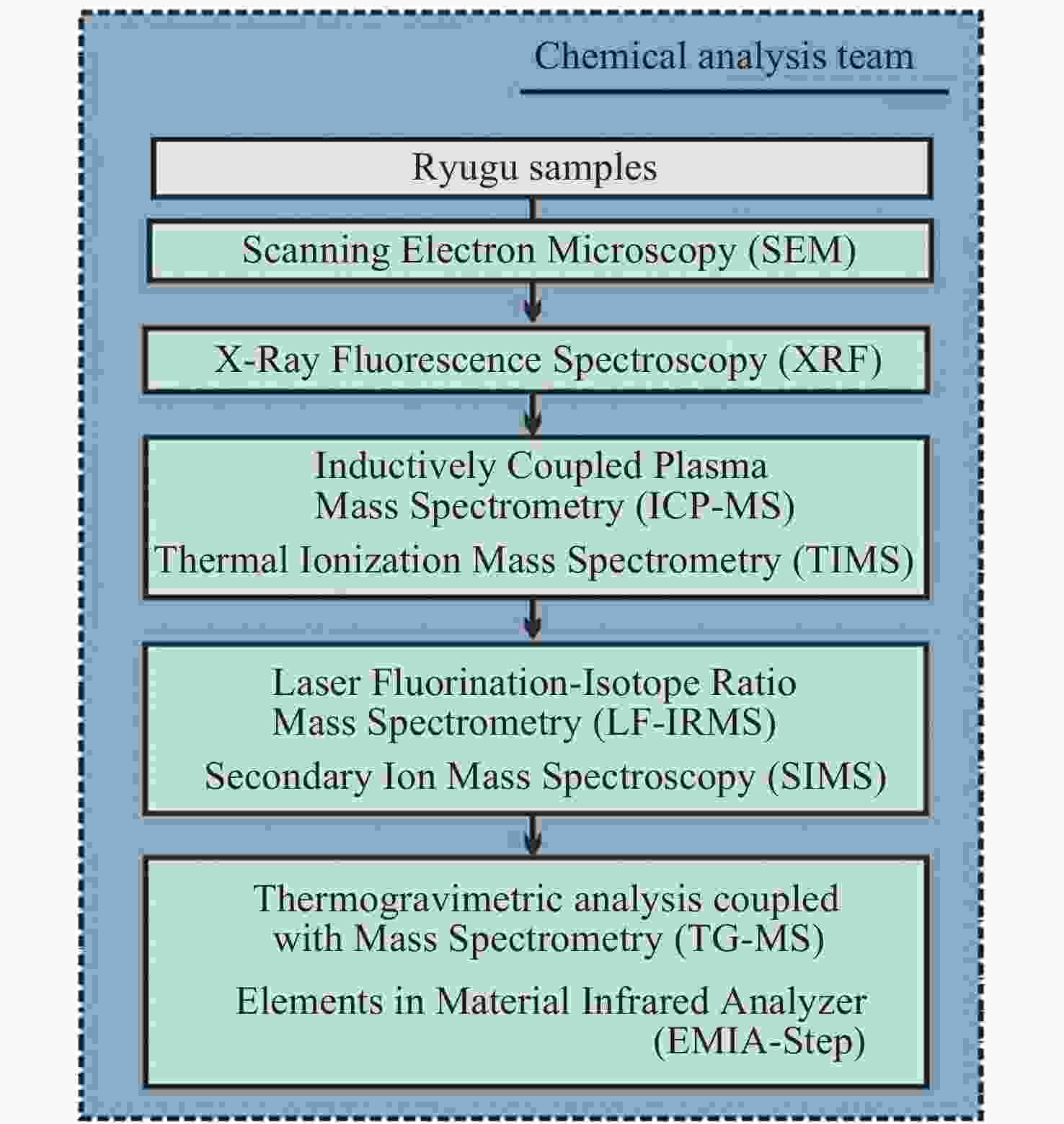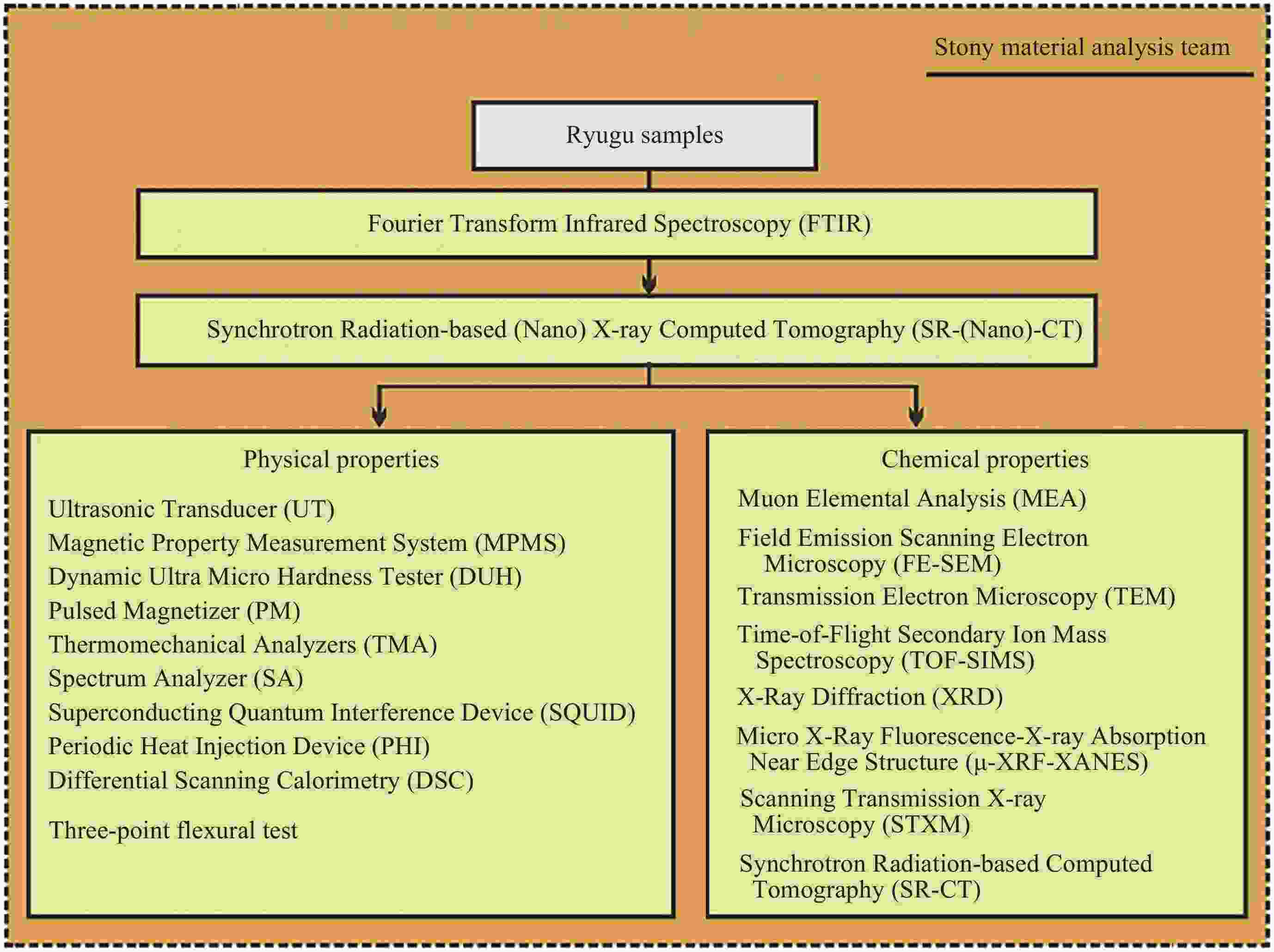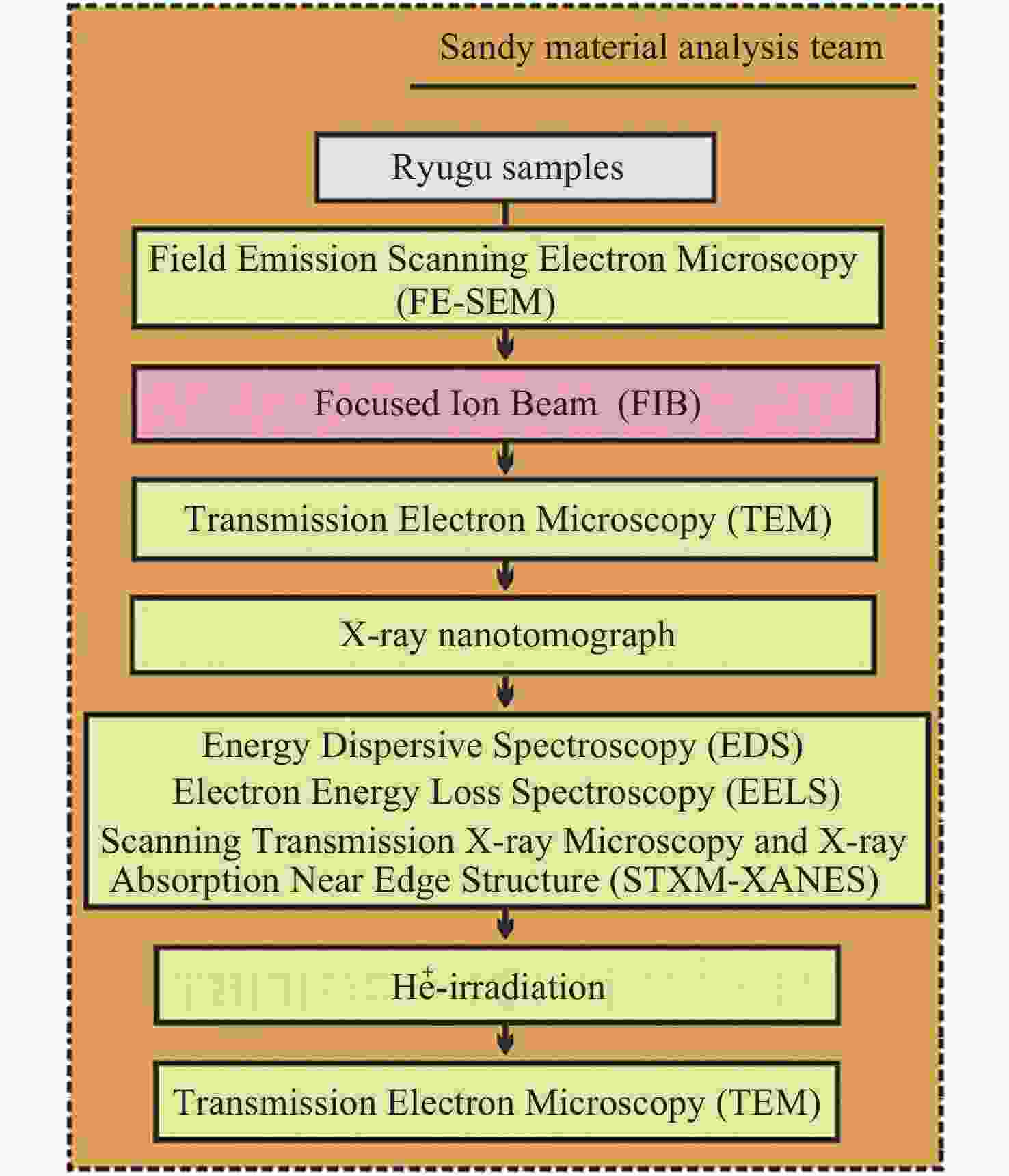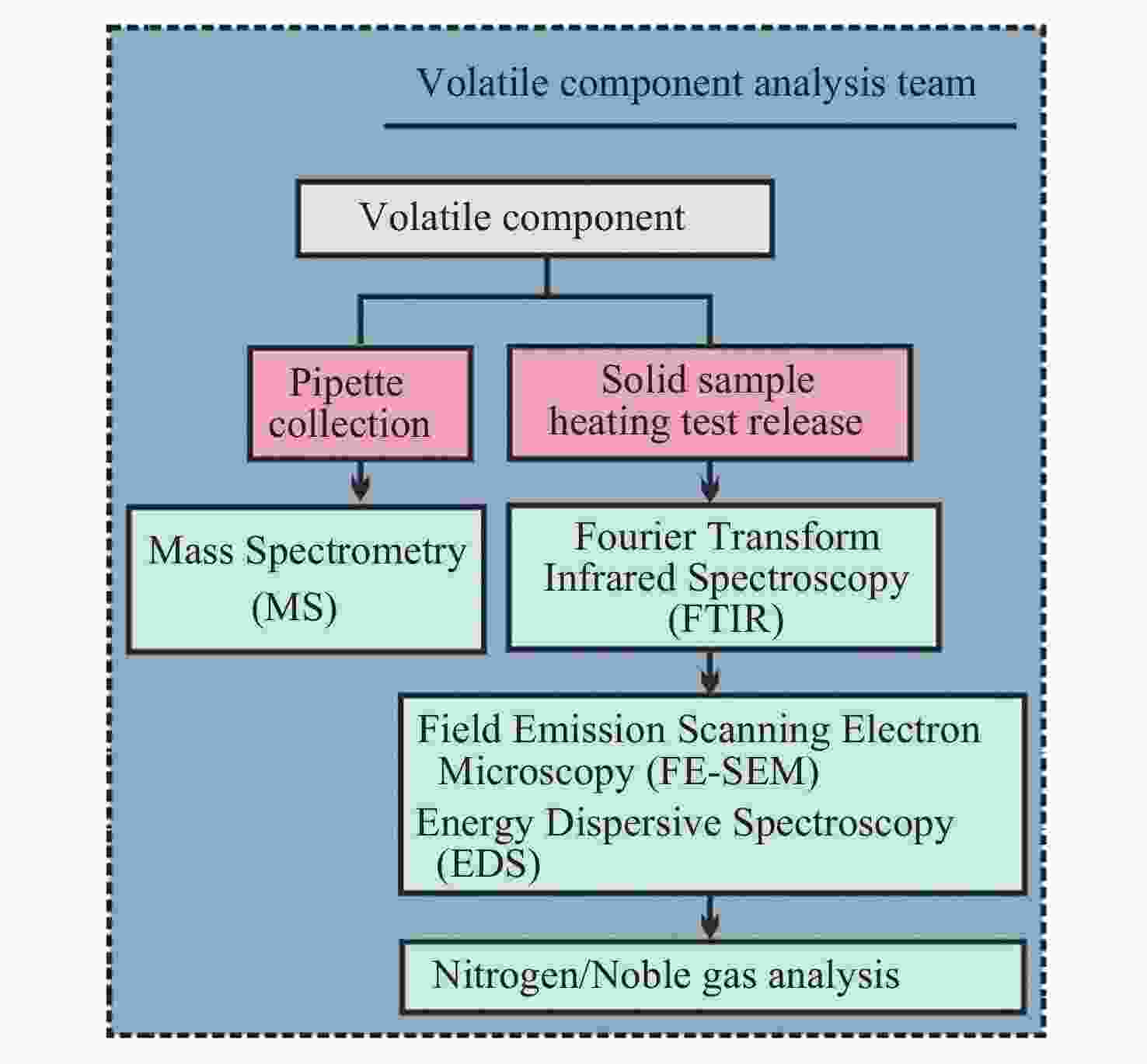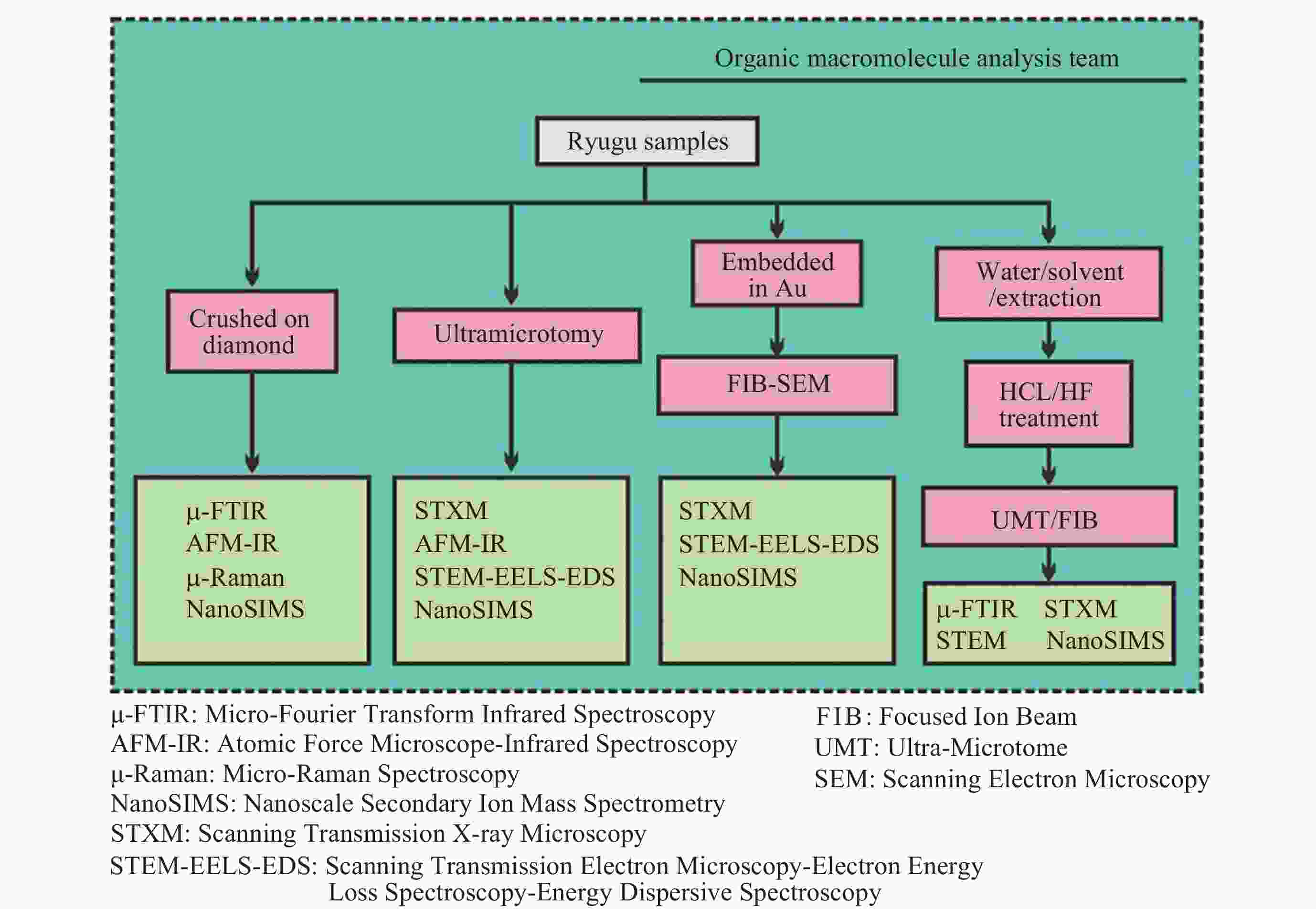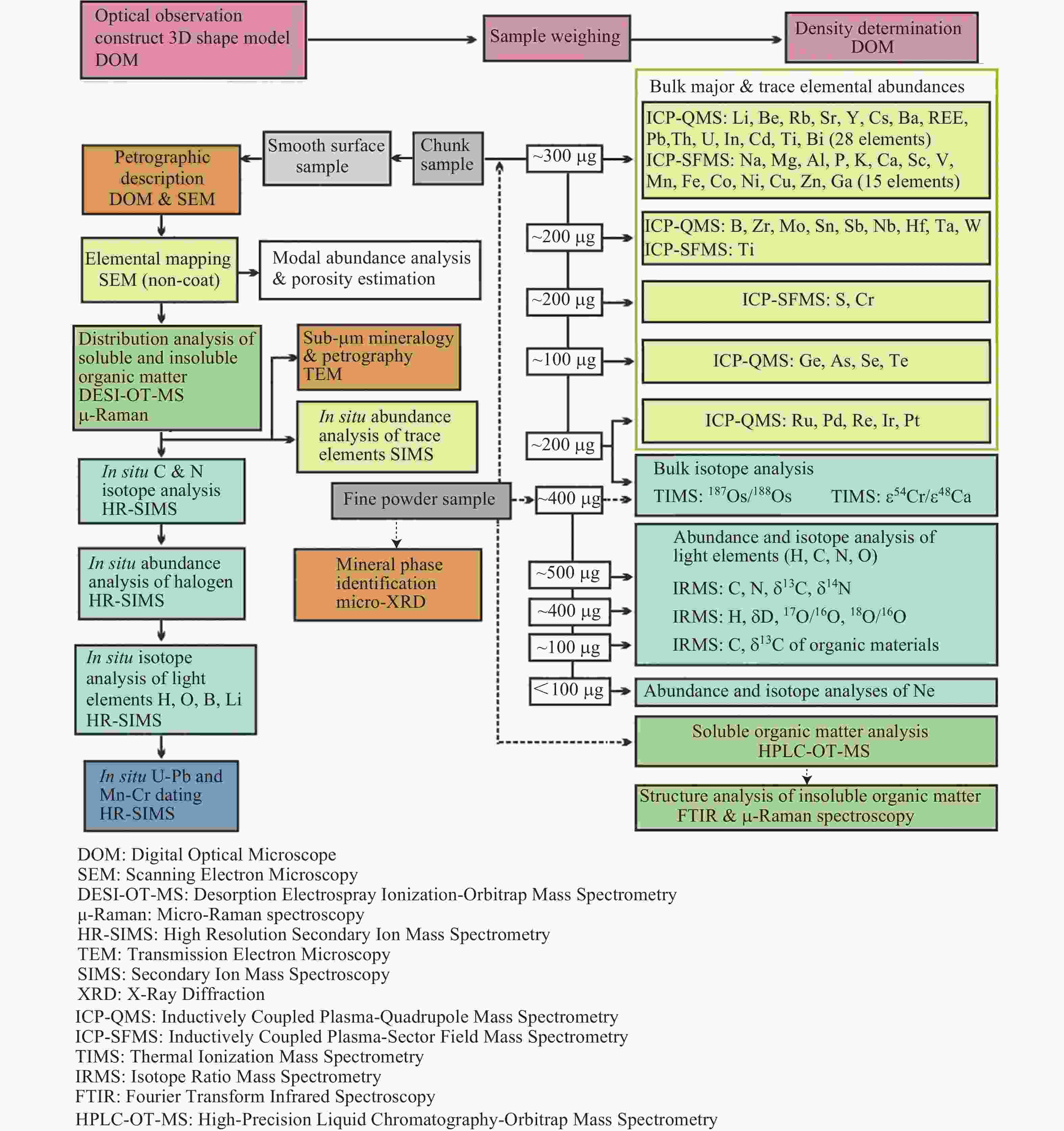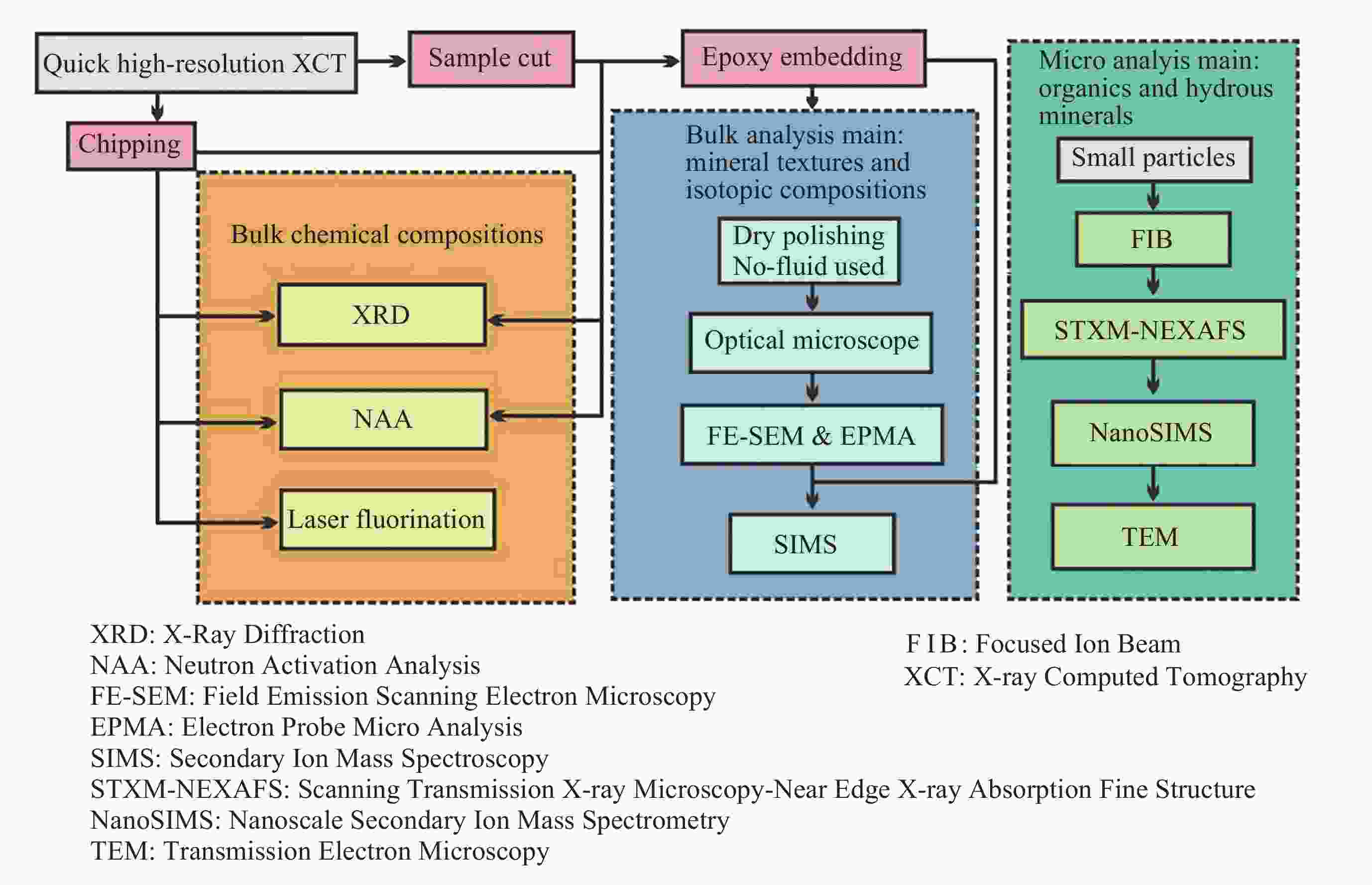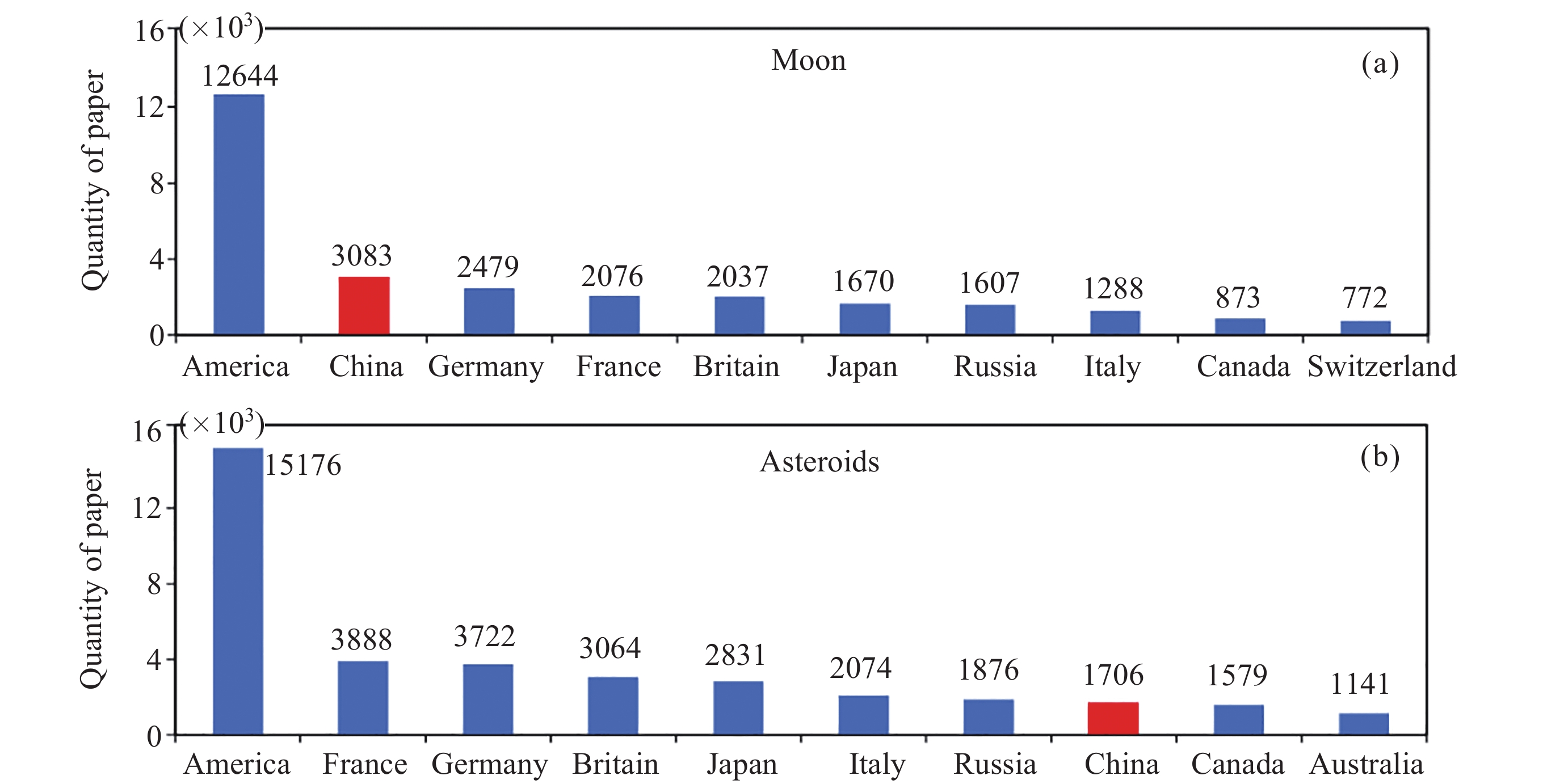History and Implications of Asteroid Exploration
-
摘要: 自1989年美国Galileo探测器在探测木星的途中顺访了小行星951 Gaspra和243 Ida起, 小行星探测已经逐渐成为各主要航天国家深空探测的重点目标之一. 过去30年, 小行星探测任务从飞掠探测到专访探测再到采样返回, 探测类型愈加丰富, 并逐步从单纯的科学探测发展到小行星防御与资源利用. 中国预计在2025年发射天问二号, 同时计划开展首次小行星防御任务. 在此背景之下, 本文详细分析了迄今为止小行星探测任务的历程、科学目标、科学载荷配置以及主要研究成果, 并重点研究了日本Hayabusa和Hayabusa 2任务及美国OSIRIS-REx任务的样品储存管理、分配经验和返回样品实验室初步分析流程, 以期对中国未来小行星探测任务的设计和实施提供参考. 设计低成本、多频次采样返回任务; 统筹任务规划, 注重加强任务之间的配合; 加强科学团队建设是更好地规划中国未来小行星探测任务的要点.Abstract: Since 1989, the Galileo spacecraft has passed asteroids 951 Gaspra and 243 Ida on its journey to Jupiter, with asteroid exploration gradually becoming a crucial aspect of deep space exploration for major aerospace nations. Over the past three decades, the asteroid exploration has evolved from mere flybys to targeted explorations, and eventually to sample return missions. During the process, the types of targets have become more diverse, and the objectives have shifted from purely scientific exploration to asteroid defense and resource utilization. In 2025, China plans the Tianwen-2 asteroid exploration mission and its first asteroid defense mission. To better serve China’s future missions, this paper reviews the asteroid exploration history, their scientific goals, payloads, and scientific contributions. For sample return missions, a detailed review of sample storage and distribution management was provided, as well as the preliminary ground laboratory analysis of Hayabusa and Hayabusa 2, and OSIRIS-REx missions. Planning low-cost, high-freguency sample-return missions, reinforcing mission collaborations,and establishing scientific design teams can better serve China’s future asteroid explorations.
-
表 1 近地小行星细分类型
Table 1. Subtypes of near-Earth asteroids
类型 定义 含义 Amors a > 1.0 AU
1.017 AU < q < 1.3 AU轨道位于地球轨道之外, 火星轨道之内 Apollos a > 1.0 AU
q < 1.017 AU轨道与地球轨道相交, 且轨道长半轴比地球长 Atens a < 1 AU
Q > 0.983 AU轨道长半轴小于1 AU, 且其中一部分与地球轨道相交, 并完全处于火星轨道之内 Atiras a < 1.0 AU
Q< 0.983 AU轨道完全位于地球轨道之内 注 a 为轨道长半轴, q 为近日点, Q 为远日点. 表 2 小行星光谱类型
Table 2. Asteroid spectral type
类型 Tholen
(1984)Gaffey
(1993)Bus and
Binzel (2002)Bus and
Demeo
(2009)光谱特征描述及Bus-Demeo分类光谱特征(基线代表相对反照率为1) 碳质
(C)B B B B B-反照率较高的C型, 1~2 μm范围呈线性偏
蓝, 约0.6 μm处为轻微的凸起
F F F-偏蓝的C型, 线性, 无明显吸收特征, 紫外线
区域吸收较强C
GC
GC C C-线性, 0.6 μm附近呈现轻微凸起, 长于1.3 μm呈红色
G-与C型相似, 具有较深的紫外线吸收
Cb Cb Cb-线性, 长于1.1 μm呈红色 
Cg Cg Cg-紫外区域特征微弱, 长于1.3 μm的略红 
Cgh Cgh Cgh-1 μm附近略红, 与Cg相似; 紫外区域特
征微弱, 0.7 μm附近存在较浅但宽的吸收带, 类
似于Ch型
Ch Ch Ch-紫外区域特征弱, 波长长于1.1 μm的略红,
0.7 μm附近存在较浅但宽的吸收带
石质
(S)S SI S S S-1 μm和2 μm处存在中等程度吸收特征, 不
同天体在2 μm处的吸收带深度不同
SII Sa Sa Sa-1 μm处存在较宽和较深的吸收带, 类似于
A型, 但斜率更小
SIII Sq Sq Sq-1 μm处存在较宽的吸收带, 与Q型相似,
1.3 μm处具有吸收特征
SIV Sr Sr Sr-1 μm和2 μm处存在吸收带, 相比于R型较
浅较窄
SV Sk Sv Sk-介于S型和K型之间, 长于0.75 μm的形状
为中等程度的上凸形状, 0.63 μm处的吸收特征
较S型强
SVI Sl Sl-介于S型和L型之间, 长于0.75 μm的光谱与
较L型为较浅到中等深度的吸收特征SVII — Sv-1 μm和2 μm处存吸收带, 相比于V型较浅
较窄X E E X X X-线性, 中红到偏红变化
E-反照率>0.3的X型, 略红, 无明显吸收特征
M M Xc Xc M-反照率介于0.1到0.3的X型
Xc-略红到中红, 形状略微弯曲并向下凹
P P Xe Xe P-反照率<0.1的X型, 略红
Xe-略红到中红, 短于0.55 μm处存在吸收特征
— — Xk Xk Xk-形状略微弯曲并向下凹, 0.8~1 μm范围
内存在吸收特征
其他 T T T T T-线性, 中红到偏红, 形状通常具有微弱的下
凹特征
D D D D D-线性, 偏红, 部分波长长于1.5 μm的较红,
部分可能形状略微弯曲
其他 — — Ld — Ld-短于0.7 μm的光谱紫外斜率较大, 长于
0.7 μm的逐渐平缓, 0.75 μm处反照率约为1.3,
与典型的D型相比, 斜率在0.44~0.7 μm范围内
通常较大, 在0.75~0.92 μm范围内更平缓— — L L L-0.7 μm左右的斜率从较大突然接近于0, 红
外波段形状下凹, 反照率最大值在1.5 μm左右,
可能存在2 μm的吸收特征
Q — Q Q Q-明显的1 μm吸收特征, 2 μm处的吸收带深
度不同
— — O O O-1 μm处的吸收光谱形状深且圆, 2 μm处存
在明显的吸收特征
R — R R R-1 μm和2 μm处存在明显的吸收特征,
1 μm处的吸收带窄于Q型, 略宽于V型
V — V V V-1 μm和2 μm处存在明显的较窄吸收带 
A — A A A-很红, 波长长于1 μm的光谱存在较深较宽
的吸收带, 2 μm附近可能存在较浅的吸收带
— K K K K-形状弯曲相对较少, 波长长于1 μm处存在
较宽的吸收带, 其波谷及左侧光谱的波峰较尖
表 3 小行星顺访任务概况
Table 3. Overview of fly-by asteroid exploration missions
任务 国家/
组织主要探
测目标飞越小行星 轨道/
光谱类型发射时间 探测时间 相关科学载荷 Galieo 美国 木星 951 Gaspra
243 Ida主带/S
主带/S1989-10-18 1991-10-29
1993-08-28固体成像仪、近红外成像光谱仪 Cassini-Huygens 美国 木星 2685 Masursky 主带/S 1997-10-15 2000-01-23 Cassini成像科学分系统 Deep Space 1 美国 Tempel 1 9969 Braille 主带/Q 1998-10-24 1999-07-29 微型集成相机光谱仪、等离子体实验设备 Stardust 美国 81 P/Wild2 5535 Annefrank 主带/S 1999-02-07 2002-11-02 导航相机 Rosetta ESA 67 P 2867 Steins
21 Lutetia主带/E
主带/C/M2004-03-02 2008-09-05
2010-07-10紫外成像光谱仪、微成像尘埃分析系统、光学、光谱和红外远程成像系统、离子中子分析光谱仪、可见光和红外热成像光谱仪 New Horizons 美国 冥王星 486958
Arrokoth柯伊伯带/
未知2006-01-19 2019-01-01 远程侦察成像仪、可见/红外光谱仪、紫外光谱仪 嫦娥二号 中国 月球 4179 Toutatis 近地/S 2010-10-01 2012-12-13 星载监视相机 表 4 小行星专访任务概况
Table 4. Overivew of specialized asteroid exploration mission
任务 国家 发射时间 探测目标 轨道/光谱
类型探测历程/计划 科学载荷 NEAR 美国 1996-02-17 253 Mathilde
433 Eros主带/C
近地/S1997年6月27日飞越小行星
253 Mathilde
2000年2月14日至2001年1月24日低轨
环绕探测253 Mathilde
2001年2月12日着陆433 Eros光谱成像仪、近红外成像光谱仪、X射
线/γ射线谱仪、NEAR激光高度计、磁力计Hayabusa 日本 2003-05-09 25143 Itokawa 近地/S 2005年9月12日到达预定轨道并进行环绕探测
2005年11月19日着陆25143 Itokawa
2010年6月13日成功降落在澳大利亚
沙漠小行星多波段成像相机、光学雷达、近红外光谱仪、X射线荧光光谱仪、广域摄像机、四离子推进器 Dawn 美国 2007-09-27 4 Vesta
1 Ceres
(矮行星)主带/V
主带/C2011年7月16日至2012年9月5日环绕
探测4 Vesta
2015年3月7日至2018年6月环绕探测1 Ceres可见/红外光谱仪、X射线谱仪、γ射线/中子探测仪、分幅式相机 Hayabusa 2 日本 2014-12-03 162173 Ryugu
1998 KY26近地/C
近地/未知2018年6月27日抵达162173 Ryugu
2019年2月21日和2019年7月11日两
次接触采样
2019年4月5日释放撞击器, 计划在2026年飞越2001 CC21
2031年抵达1998 KY26可见/红外光谱仪、X射线谱仪、γ射线/中子探测仪、分幅式相机、小型携带撞击器、表面勘察着陆器 OSIRIS-REx 美国 2016-09-08 101955 Bennu 近地/C 2018年12月3日抵达
2020年10月20日成功采集样品
2023年9月24日返回地球相机套件、激光高度计、可见光/红外光谱仪、热红外光谱仪、风化层X射线成像光谱仪、触地即离样品采集设备 OSIRIS-
APEX美国 2023-10-31 99942 Apophis 近地/S 2023年探测器继续围绕太阳运行,
2029年近离环绕探测99942 Apophis与OSIRIS-REx相同 Lucy 美国 2021-11-16 152830
Dinkinesh主带/S 2023年11月1日飞越152830 Dinkinesh 远程勘测成像仪、光学/近红外光谱仪、热红外光谱仪 52246 Donaldjohanson 主带/C 2025年4月20日飞越52246 Donaldjo-hanson 3548
Eurybates特洛伊/C 2027年8月12日飞越3548 Eurybates及Queta Queta 特洛伊/C 15094
Polymele特洛伊/P 2027年9月15日飞越15094 Polymele 11351 Leucus 特洛伊/D 2028年4月18日飞越11351 Leucus 21900 Orus 特洛伊/D 2028年11月11日飞越21900 Orus 617 Patroclus 特洛伊/P 2033年3月3日飞越617 Patroclus和Menoetius Menoetius 特洛伊/P DART 美国 2021-11-24 65803
Didymos近地/S 2022年9月26日撞击65803 Dimorphos 光学导航相机、意大利小行星成像轻型立方星 Dimorphos 近地/S Psyche 美国 2023-10-13 16 Psyche 主带/M 2029年8月至2030年5月环绕探测
16 Psyche多光谱成像仪、磁强计、X波段无线电远程通信系统、γ射线和中子谱仪 表 5 小行星未来任务概况
Table 5. Overview of future asteroid exploration mission
任务 国家/
组织计划
时间探测目标 轨道/光谱
类型探测计划 科学载荷 Hera ESA 2024 65083
Didymos近地/S 2026年12月至2027年6月详细环绕
探测65803 Didymos和Dimorphos小行星分幅相机、热红外成像仪、行星高度计、高分辨率多光谱成像仪、无线电科学实验设备 Dimorphos 近地/S Destiny+ 日本
德国2024 3200
Phaethon近地/C 预计4~5年时间达到3200 Phaethon远距离环绕轨道, 其后可能会对其他小行星进行探测 尘埃分析仪、望远镜照相、多波段相机 天问二号 中国 2025 469219 Kamo`oalewa 近地/未知 预计环绕探测469219 Kamo`oalewa约一年后采样返回 广角/窄角多光谱彩色相机、热发射光谱仪、可见光/近红外成像光谱仪、质谱仪、磁力计、带电/中性粒子及尘埃分析仪 311P 主带彗星 7年后到达311P并对其进行环绕
探测近地小行星防御任务 中国 2025 2019 VL5 近地/未知 2026年2月到达 征集中 -
[1] LAURINI K C, GERSTENMAIER W H. The global exploration roadmap and its significance for NASA[J]. Space Policy, 2014, 30(3): 149-155 doi: 10.1016/j.spacepol.2014.08.004 [2] 中华人民共和国国务院新闻办公室. 《2016中国的航天》白皮书[EB/OL]. (2016-12-27)[2023-07-26]. http://www.scio.gov.cn/ztk/dtzt/34102/35723/index.htmlThe State Council Information Office of the People’s Republic of China. China’s Space Activities in 2016[EB/OL]. (2016-12-27)[2023-07-26]. http://www.scio.gov.cn/ztk/dtzt/34102/35723/index.html [3] 郑永春, 欧阳自远. 太阳系探测的发展趋势与科学问题分析[J]. 深空探测学报, 2014, 1(2): 83-92ZHENG Yongchun, OUYANG Ziyuan. Development trend analysis of Solar System exploration and the scientific vision for future missions[J]. Journal of Deep Space Exploration, 2014, 1(2): 83-92 [4] 唐红, 周传娇, 李雄耀, 等. 小行星表面有机物的红外光谱探测方法[J]. 空间科学学报, 2022, 42(1): 117-126 doi: 10.11728/cjss2022.01.201127103TANG Hong, ZHOU Chuanjiao, LI Xiongyao, et al. Infrared spectroscopic detection of organic matter on the surface of asteroids[J]. Chinese Journal of Space Science, 2022, 42(1): 117-126 doi: 10.11728/cjss2022.01.201127103 [5] LIN Y T, ZHANG Y H, HU S, et al. Concepts of the small body sample return missions - the 1st 10 million year evolution of the solar system[J]. Space Science Reviews, 2020, 216(4): 45 doi: 10.1007/s11214-020-00670-1 [6] PEÑA-RAMOS J A, RAMÍREZ-DE LUIS F R. Resources in space and asteroid mining: where we are and which challenges should be expected[J]. International Journal of Technology Management, 2020, 82(3/4): 197-205 [7] 徐伟彪, 赵海斌. 小行星深空探测的科学意义和展望[J]. 地球科学进展, 2005, 20(11): 1183-1190XU Weibiao, ZHAO Haibin. Deep space exploration of asteroids: the science perspectives[J]. Advances in Earth Science, 2005, 20(11): 1183-1190 [8] CHENG A F, ATCHISON J, KANTSIPER B, et al. Asteroid impact and deflection assessment mission[J]. Acta Astronautica, 2015, 115: 262-269 doi: 10.1016/j.actaastro.2015.05.021 [9] 潘教峰, 王海霞, 冷伏海, 等. 《2022研究前沿》——11个大学科领域发展趋势与重点研究问题[J]. 中国科学院院刊, 2023, 38(1): 154-166PAN Jiaofeng, WANG Haixia, LENG Fuhai, et al. 2022 Research fronts: development trends and key research questions in 11 broad research areas[J]. Bulletin of Chinese Academy of Sciences, 2023, 38(1): 154-166 [10] 国家航天局. 小行星探测任务有效载荷和搭载项目机遇公告[EB/OL]. (2019-04-19)[2023-08-17]CNSA. Announcement of Opportunities for Scientific Payloads and Projects onboard Asteroid Exploration Mission. https://www.cnsa.gov.cn/english/n6465652/n6465653/c6805893/content.html[EB/OL]. (2019-04-19)[2023-08-17] [11] CHEN Q. Near-Earth Asteroid Defense[R]. United Nations/China 2nd Global Partnership Workshop on Space Exploration and Innovation, 2022 [12] 中华人民共和国国家市场监督管理总局, 中国国家标准化管理委员会. GB/T 30114.4-2014 空间科学及其应用术语 第4部分: 月球与行星科学[S]. 北京: 中国标准出版社, 2015General Administration of Quality Supervision, Inspection and Quarantine of the People’s Republic of China, Standardization Administration of the People’s Republic of China. GB/T 30114.4-2014 Terminology for space science and application—Part 4: lunar and planetary science[S]. Beijing: Standards Press of China, 2015 [13] 李春来, 刘建军, 严韦, 等. 小行星探测科学目标进展与展望[J]. 深空探测学报, 2019, 6(5): 424-436LI Chunlai, LIU Jianjun, YAN Wei, et al. Overview of scientific objectives for minor planets exploration[J]. Journal of Deep Space Exploration, 2019, 6(5): 424-436 [14] NASA. Asteroids[EB/OL]. (2022-12-15)[2023-09-02]. https://science.nasa.gov/solar-system/asteroids/ [15] International Astronomical Union. Minor Planet Center: Latest Published Data[EB/OL]. (2023-07-06)[2023-09-13]. https://minorplanetcenter.net/mpc/summary [16] 胡中为, 赵海斌. 太阳系考古遗存–小行星 [M]. 北京: 科学出版社, 2017HU Zhongwei, ZHAO Haibin. Solar System Archaeological Remains: Minor Planet[M]. Beijing: Science Press, 2017 [17] 谢欢, 陈杰, 童小华, 等. 小行星采样返回任务的选址方法进展与启发[J]. 同济大学学报(自然科学版), 2023, 51(7): 1010-1017,1032XIE Huan, CHEN Jie, TONG Xiaohua, et al. Advances in site selection methods of asteroid sample return missions[J]. Journal of Tongji University (Natural Science), 2023, 51(7): 1010-1017,1032 [18] 戴文赛, 胡中为. 论小行星的起源[J]. 天文学报, 1979, 20(1): 33-42DAI Wensai, HU Zhongwei. On the origin of the asteroids[J]. Acta Astronomica Sinica, 1979, 20(1): 33-42 [19] 戴文赛, 胡中文, 阎林册. 太阳系演化(下) [M]. 上海: 上海科学技术出版社, 1986DAI Wensai, HU Zhongwei, YAN Lince. Solar System Evolution (Part 2) [M]. Shanghai: Shanghai Scientific and Technical Publishers, 1986 [20] 肖龙, 胡新宇. 行星地质学 [M]. 北京: 地质出版社, 2013XIAO Long, HU Xinyu. Planetary Geology [M]. Beijing: Geology Press, 2013 [21] BRITT D T, YEOMANS D, HOUSEN K, et al. Asteroid Density, Porosity, and Structure [M]. Tucson: University of Arizona Press, 2002 [22] PRICE S D. The surface properties of asteroids[J]. Advances in Space Research, 2004, 33(9): 1548-1557 doi: 10.1016/S0273-1177(03)00453-8 [23] PIETERS C M, NOBLE S K. Space weathering on airless bodies[J]. Journal of Geophysical Research: Planets, 2016, 121(10): 1865-1884 doi: 10.1002/2016JE005128 [24] 汪琦. 小行星与彗星—近地小行星、主带小行星和彗星之间相互关系探讨[J]. 紫金山天文台台刊, 1992, 11(2): 75-84WANG Qi. Asteroids and comets—the relationship between near—Earth asteroids and main—belt asteroids and conets[J]. Publications of the Purple Mountain Observatory, 1992, 11(2): 75-84 [25] GREENSTREET S. Asteroids in the inner solar system[J]. Physics Today, 2021, 74(7): 42-47 doi: 10.1063/PT.3.4794 [26] HORNER J, EVANS N W, BAILEY M E. Simulations of the population of Centaurs-I. The bulk statistics[J]. Monthly Notices of the Royal Astronomical Society, 2004, 354(3): 798-810 doi: 10.1111/j.1365-2966.2004.08240.x [27] SCHULZ R. Trans-neptunian objects[J]. The Astronomy and Astrophysics Review, 2002, 11(1): 1-31 doi: 10.1007/s001590100014 [28] GRADIE J, TEDESCO E. Compositional structure of the asteroid belt[J]. Science, 1982, 216(4553): 1405-1407 doi: 10.1126/science.216.4553.1405 [29] 吴昀昭, 徐天弈, 温世博, 等. 小行星目标特性遥感探测[J]. 空间碎片研究, 2021, 21(4): 11-21WU Yunzhao, XU Tianyi, WEN Shibo, et al. Remote sensing detection of asteroid target properties[J]. Space Debris Research, 2021, 21(4): 11-21 [30] THOLEN D J. Asteroid Taxonomy from Cluster Analysis of Photometry[D]. Tucson: University of Arizona, 1984 [31] GAFFEY M J, BELL J F, BROWN R H, et al. Mineralogical variations within the S-type asteroid class[J]. Icarus, 1993, 106(2): 573-602 doi: 10.1006/icar.1993.1194 [32] BUS S J, BINZEL R P. Phase II of the small main-belt asteroid spectroscopic survey A feature-based taxonomy[J]. Icarus, 2002, 158(1): 146-177 doi: 10.1006/icar.2002.6856 [33] DEMEO F E, BINZEL R P, SLIVAN S M, et al. An extension of the Bus asteroid taxonomy into the near-infrared[J]. Icarus, 2009, 202(1): 160-180 doi: 10.1016/j.icarus.2009.02.005 [34] KAUFMANN W J. Discovering the Universe [M]. New York: Freeman, 1987 [35] YAMAZAKI Y, YAZAWA H, HIRATA Y. Experimental study on freeze concentration with ice-lining[J]. Kagaku Kogaku Ronbunshu, 1998, 24(1): 30-36 doi: 10.1252/kakoronbunshu.24.30 [36] DEMEO F E, CARRY B. Solar System evolution from compositional mapping of the asteroid belt[J]. Nature, 2014, 505(7485): 629-634 doi: 10.1038/nature12908 [37] JIANG H X, JI J H. Thermophysical modeling of 20 Themis family asteroids with WISE/NEOWISE observations[J]. The Astronomical Journal, 2021, 162(2): 40 doi: 10.3847/1538-3881/ac01c8 [38] 季江徽, 胡寿村. 太阳系小天体表面环境综述[J]. 航天器环境工程, 2019, 36(6): 519-532JI Jianghui, HU Shoucun. A review of the surface environment of small bodies in solar system[J]. Spacecraft Environment Engineering, 2019, 36(6): 519-532 [39] NASA. Galileo-Overview[EB/OL]. (2021-07-09)[2023-08-04]. https://solarsystem.nasa.gov/missions/galileo/overview [40] KIVELSON M G, BARGATZE L F, KHURANA K K, et al. Magnetic field signatures near Galileo’s closest approach to Gaspra[J]. Science, 1993, 261(5119): 331-334 doi: 10.1126/science.261.5119.331 [41] CARR M H, KIRK R L, MCEWEN A, et al. The geology of gaspra[J]. Icarus, 1994, 107(1): 61-71 doi: 10.1006/icar.1994.1006 [42] THOMAS P C, VEVERKA J, SIMONELLI D, et al. The shape of gaspra[J]. Icarus, 1994, 107(1): 23-36 doi: 10.1006/icar.1994.1004 [43] VEVERKA J, BELTON M, KLAASEN K, et al. Galileo’s encounter with 951 gaspra: overview[J]. Icarus, 1994, 107(1): 2-17 doi: 10.1006/icar.1994.1002 [44] D’AMBROSIO A, SCHIASSI E, CURTI F, et al. Physics-informed neural networks for optimal proximity maneuvers with collision avoidance around asteroids [C]//Proceedings of the AAS/AIAA Astrodynamics Specialist Conference. Big Sky: AAS/AIAA, 2021 [45] BELTON M J S, CHAPMAN C R, THOMAS P C, et al. Bulk density of asteroid 243 Ida from the orbit of its satellite Dactyl[J]. Nature, 1995, 374(6525): 785-788 doi: 10.1038/374785a0 [46] BELTON M J S, CHAPMAN C R, KLAASEN K P, et al. Galileo’s encounter with 243 Ida: an overview of the imaging experiment[J]. Icarus, 1996, 120(1): 1-19 doi: 10.1006/icar.1996.0032 [47] THOMAS P C, BELTON M J S, CARCICH B, et al. The shape of Ida[J]. Icarus, 1996, 120(1): 20-32 doi: 10.1006/icar.1996.0033 [48] CHAPMAN C R. S-type asteroids, ordinary chondrites, and space weathering: the evidence from Galileo’s fly-bys of Gaspra and Ida[J]. Meteoritics & Planetary Science, 1996, 31(6): 699-725 [49] GRANAHAN J. A compositional study of asteroid 243 Ida and Dactyl from Galileo NIMS and SSI observations[J]. Journal of Geophysical Research: Planets, 2002, 107(E10): 5090 [50] NASA Photojournal of 2685 Masursky[EB/OL]. (2000-02-11)[2023-08-07]. https://photojournal.jpl.nasa.gov/catalog/PIA02449 [51] MASIERO J R, GRAV T, MAINZER A K, et al. Main-belt asteroids with wise/neowise: near-infrared albedos[J]. The Astrophysical Journal, 2014, 791(2): 121 doi: 10.1088/0004-637X/791/2/121 [52] NASA Jet Propulsion Laboratory (JPL). Small-Body Database Lookup[EB/OL]. [2023-11-15]. https://ssd.jpl.nasa.gov/tools/sbdb_lookup.html#/ [53] LAZZARIN M, FORNASIER S, BARUCCI M A, et al. Groundbased investigation of asteroid 9969 Braille, target of the spacecraft mission Deep Space 1[J]. Astronomy & Astrophysics, 2001, 375(1): 281-284 [54] BURATTI B J, BRITT D T, SODERBLOM L A, et al. 9969 Braille: deep Space 1 infrared spectroscopy, geometric albedo, and classification[J]. Icarus, 2004, 167(1): 129-135 doi: 10.1016/j.icarus.2003.06.002 [55] DUXBURY T C, NEWBURN R L, ACTON C H, et al. Asteroid 5535 Annefrank size, shape, and orientation: stardust first results[J]. Journal of Geophysical Research: Planets, 2004, 109(E2): E02002 [56] STRYK T, STOOKE P J. The surface of asteroid 5535 Annefrank [C]//Proceedings of the 47th Lunar and Planetary Science Conference. Woodlands: LPI, 2016 [57] GOESMANN F, ROSENBAUER H, BREDEHÖFT J H, et al. Organic compounds on comet 67P/Churyumov-Gerasimenko revealed by COSAC mass spectrometry[J]. Science, 2015, 349(6247): aab0689 doi: 10.1126/science.aab0689 [58] CAPACCIONI F, CORADINI A, FILACCHIONE G, et al. The organic-rich surface of comet 67P/Churyumov-Gerasimenko as seen by VIRTIS/Rosetta[J]. Science, 2015, 347(6220): aaa0628 doi: 10.1126/science.aaa0628 [59] ALTWEGG K, BALSIGER H, BAR-NUN A, et al. 67P/Churyumov-Gerasimenko, a Jupiter family comet with a high D/H ratio[J]. Science, 2015, 347(6220): 1261952 doi: 10.1126/science.1261952 [60] AUSTER H U, APATHY I, BERGHOFER G, et al. The nonmagnetic nucleus of comet 67P/Churyumov-Gerasimenko[J]. Science, 2015, 349(6247): aaa5102 doi: 10.1126/science.aaa5102 [61] KOFMAN W, HERIQUE A, BARBIN Y, et al. Properties of the 67P/Churyumov-Gerasimenko interior revealed by CONSERT radar[J]. Science, 2015, 349(6247): aab0639 doi: 10.1126/science.aab0639 [62] LAMY P L, JORDA L, FORNASIER S, et al. Asteroid 2867 Steins III. Spitzer Space Telescope observations, size determination, and thermal properties[J]. Astronomy & Astrophysics, 2008, 487(3): 1187-1193 [63] DOTTO E, PERNA D, FORNASIER S, et al. Photometric and spectroscopic investigation of 2867 Steins, target of the Rosetta mission: ground-based results prior to the Rosetta fly-by[J]. Astronomy & Astrophysics, 2009, 494(3): L29-L32 [64] KELLER H U, BARBIERI C, KOSCHNY D, et al. E-type asteroid (2867) steins as imaged by OSIRIS on board Rosetta[J]. Science, 2010, 327(5962): 190-193 doi: 10.1126/science.1179559 [65] LEYRAT C, CORADINI A, ERARD S, et al. Thermal properties of the asteroid (2867) steins as observed by VIRTIS/Rosetta[J]. Astronomy & Astrophysics, 2011, 531: A168 [66] BARUCCI M A, CAPRIA M T, CORADINI A, et al. Classification of asteroids using G-mode analysis[J]. Icarus, 1987, 72(2): 304-324 doi: 10.1016/0019-1035(87)90177-1 [67] BIRLAN M, BARUCCI M A, VERNAZZA P, et al. Near-IR spectroscopy of asteroids 21 Lutetia, 89 Julia, 140 Siwa, 2181 Fogelin and 5480 (1989YK8), potential targets for the Rosetta mission; remote observations campaign on IRTF[J]. New Astronomy, 2004, 9(5): 343-351 doi: 10.1016/j.newast.2003.12.005 [68] BARUCCI M A, FULCHIGNONI M, ROSSI A. Rosetta asteroid targets: 2867 Steins and 21 Lutetia[J]. Space Science Reviews, 2007, 128(1/4): 67-78 [69] LAZZARIN M, MARCHI S, MOROZ L V, et al. New visible spectra and mineralogical assessment of (21) Lutetia, a target of the Rosetta mission[J]. Astronomy & Astrophysics, 2009, 498(1): 307-311 [70] OCKERT-BELL M E, CLARK B E, SHEPARD M K, et al. The composition of M-type asteroids: synthesis of spectroscopic and radar observations[J]. Icarus, 2010, 210(2): 674-692 doi: 10.1016/j.icarus.2010.08.002 [71] SIERKS H, LAMY P, BARBIERI C, et al. Images of asteroid 21 Lutetia: a remnant planetesimal from the early solar system[J]. Science, 2011, 334(6055): 487-490 doi: 10.1126/science.1207325 [72] STERN S A, WEAVER H A, SPENCER J R, et al. Initial results from the New Horizons exploration of 2014 MU69, a small Kuiper Belt object[J]. Science, 2019, 364(6441): eaaw9771 doi: 10.1126/science.aaw9771 [73] MCKINNON W B, RICHARDSON D C, MAROHNIC J C, et al. The solar nebula origin of (486958) Arrokoth, a primordial contact binary in the Kuiper Belt[J]. Science, 2020, 367(6481): eaay6620 doi: 10.1126/science.aay6620 [74] KEANE J T, PORTER S B, BEYER R A, et al. The Geophysical environment of (486958) Arrokoth-A small Kuiper belt object explored by New Horizons[J]. Journal of Geophysical Research: Planets, 2022, 127(6): e2021JE007068 doi: 10.1029/2021JE007068 [75] NASA. New Horizons[EB/OL]. (2022-10-05)[2023-08-05]. https://solarsystem.nasa.gov/missions/new-horizons/in-depth [76] HUDSON R S, OSTRO S J, SCHEERES D J. High-resolution model of Asteroid 4179 Toutatis[J]. Icarus, 2003, 161(2): 346-355 doi: 10.1016/S0019-1035(02)00042-8 [77] HUANG J C, JI J H, YE P J, et al. The ginger-shaped asteroid 4179 Toutatis: new observations from a successful flyby of Chang’e-2[J]. Scientific Reports, 2013, 3(1): 3411 doi: 10.1038/srep03411 [78] ZHU M H, FA W Z, IP W H, et al. Morphology of asteroid (4179) Toutatis as imaged by Chang’E-2 spacecraft[J]. Geophysical Research Letters, 2014, 41(2): 328-333 doi: 10.1002/2013GL058914 [79] 刘磊, 刘勇, 曹建峰, 等. “嫦娥二号”探测小行星任务转移轨道设计[J]. 宇航学报, 2014, 35(3): 262-268LIU Lei, LIU Yong, CAO Jianfeng, et al. Mission design of the CHANG’E-2 asteroid exploration[J]. Journal of Astronautics, 2014, 35(3): 262-268 [80] HU S C, JI J H, RICHARDSON D C, et al. The formation mechanism of 4179 Toutatis’ elongated bilobed structure in a close Earth encounter scenario[J]. Monthly Notices of the Royal Astronomical Society, 2018, 478(1): 501-515 doi: 10.1093/mnras/sty1073 [81] JIANG Y, JI J H, HUANG J C, et al. Boulders on asteroid Toutatis as observed by Chang’e-2[J]. Scientific Reports, 2015, 5(1): 16029 doi: 10.1038/srep16029 [82] NASA. Discovery Program[EB/OL]. (2023-01-21)[2023-08-12]. https://www.nasa.gov/planetarymissions/discovery.html#Past [83] NASA. NEAR Shoemaker[EB/OL]. (2022-10-28)[2023-08-12]. https://nssdc.gsfc.nasa.gov/nmc/spacecraft/display.action?id=1996-008A [84] CHENG A F. Near Earth Asteroid Rendezvous: Mission Summary [M]. Tucson: The University of Arizona Press, 2002 [85] VEVERKA J, THOMAS P, HARCH A, et al. NEAR encounter with asteroid 253 mathilde: overview[J]. Icarus, 1999, 140(1): 3-16 doi: 10.1006/icar.1999.6120 [86] RIVKIN A S, CLARK B E, BRITT D T, et al. Infrared spectrophotometry of the NEAR flyby target 253 Mathilde[J]. Icarus, 1997, 127(1): 255-257 doi: 10.1006/icar.1997.5695 [87] ANDERSON B J, ACUÑA M H. Search for solar wind–asteroid interactions at Eros[J]. Advances in Space Research, 2004, 33(11): 1989-1995 doi: 10.1016/j.asr.2003.03.032 [88] LARSON H P, FINK U, TREFFERS R R, et al. The infrared spectrum of asteroid 433 Eros[J]. Icarus, 1976, 28(1): 95-103 doi: 10.1016/0019-1035(76)90091-9 [89] YEOMANS D K, ANTREASIAN P G, BARRIOT J P, et al. Radio science results during the NEAR-Shoemaker spacecraft rendezvous with Eros[J]. Science, 2000, 289(5487): 2085-2088 doi: 10.1126/science.289.5487.2085 [90] VEVERKA J, ROBINSON M, THOMAS P, et al. NEAR at Eros: imaging and spectral results[J]. Science, 2000, 289(5487): 2088-2097 doi: 10.1126/science.289.5487.2088 [91] VEVERKA J, THOMAS P C, ROBINSON M, et al. Imaging of small-scale features on 433 Eros from NEAR: evidence for a complex regolith[J]. Science, 2001, 292(5516): 484-488 doi: 10.1126/science.1058651 [92] COLWELL J E, GULBIS A A S, HORÁNYI M, et al. Dust transport in photoelectron layers and the formation of dust ponds on Eros[J]. Icarus, 2005, 175(1): 159-169 doi: 10.1016/j.icarus.2004.11.001 [93] NASA. Hayabusa[EB/OL]. (2018-01-25)[2023-08-13]. https://solarsystem.nasa.gov/missions/hayabusa/in-depth [94] NASA. Hayabusa Scientific Instruments[EB/OL]. (2007)[2023-08-13]. https://darts.isas.jaxa.jp/planet/project/hayabusa/instruments.html [95] FUJIWARA A, KAWAGUCHI J, YEOMANS D K, et al. The Rubble-Pile asteroid Itokawa as observed by Hayabusa[J]. Science, 2006, 312(5778): 1330-1334 doi: 10.1126/science.1125841 [96] ABE S, MUKAI T, HIRATA N, et al. Mass and local topography measurements of Itokawa by Hayabusa[J]. Science, 2006, 312(5778): 1344-1347 doi: 10.1126/science.1126272 [97] DEMURA H, KOBAYASHI S, NEMOTO E, et al. Pole and global shape of 25143 Itokawa[J]. Science, 2006, 312(5778): 1347-1349 doi: 10.1126/science.1126574 [98] KITAZATO K, ABE M, ISHIGURO M, et al. 25143 Itokawa: direct detection of the current decelerating spin state due to YORP effect[J]. Astronomy & Astrophysics, 2007, 472(1): L5-L8 [99] NAKAMURA T, NOGUCHI T, TANAKA M, et al. Itokawa dust particles: a direct link between S-type asteroids and ordinary chondrites[J]. Science, 2011, 333(6046): 1113-1116 doi: 10.1126/science.1207758 [100] NAKAMURA T, NAKATO A, ISHIDA H, et al. Mineral chemistry of MUSES-C Regio inferred from analysis of dust particles collected from the first- and second-touchdown sites on asteroid Itokawa[J]. Meteoritics & Planetary Science, 2014, 49(2): 215-227 [101] EBIHARA M, SHIRAI N, SEKIMOTO S, et al. Chemical and mineralogical compositions of two grains recovered from asteroid Itokawa[J]. Meteoritics & Planetary Science, 2015, 50(2): 243-254 [102] YURIMOTO H, ABE K I, ABE M, et al. Oxygen isotopic compositions of asteroidal materials returned from Itokawa by the Hayabusa mission[J]. Science, 2011, 333(6046): 1116-1119 doi: 10.1126/science.1207776 [103] TSUCHIYAMA A, UESUGI M, UESUGI K, et al. Three dimensional structures of particles recovered from the asteroid Itokawa by the Hayabusa mission and a role of X-ray microtomography in the preliminary examination [C]//Proceedings of the 42nd Lunar and Planetary Science Conference. The Woodsland: LPI, 2011 [104] TSUCHIYAMA A, UESUGI M, UESUGI K, et al. Three-dimensional microstructure of samples recovered from asteroid 25143 Itokawa: comparison with LL5 and LL6 chondrite particles[J]. Meteoritics & Planetary Science, 2014, 49(2): 172-187 [105] KITAJIMA F, KOTSUGI M, OHKOCHI T, et al. A micro-spectroscopic approach to the carbonaceous matter in the particles recovered by the Hayabusa mission [C]//Proceedings of the 42nd Lunar and Planetary Science Conference. The Woodsland: LPI, 2011 [106] NARAOKA H, MITA H, HAMASE K, et al. Preliminary organic compound analysis of microparticles returned from Asteroid 25143 Itokawa by the Hayabusa mission[J]. Geochemical Journal, 2012, 46(1): 61-72 doi: 10.2343/geochemj.1.0134 [107] NARAOKA H, AOKI D, FUKUSHIMA K, et al. ToF-SIMS analysis of carbonaceous particles in the sample catcher of the Hayabusa spacecraft[J]. Earth, Planets and Space, 2015, 67(1): 1-9 doi: 10.1186/s40623-014-0143-5 [108] NOGUCHI T, NAKAMURA T, KIMURA M, et al. Incipient space weathering observed on the surface of Itokawa dust particles[J]. Science, 2011, 333(6046): 1121-1125 doi: 10.1126/science.1207794 [109] NOGUCHI T, KIMURA M, HASHIMOTO T, et al. Space weathered rims found on the surfaces of the Itokawa dust particles[J]. Meteoritics & Planetary Science, 2014, 49(2): 188-214 [110] NAGAO K, OKAZAKI R, NAKAMURA T, et al. Irradiation history of Itokawa regolith material deduced from noble gases in the Hayabusa samples[J]. Science, 2011, 333(6046): 1128-1131 doi: 10.1126/science.1207785 [111] WAKITA S, NAKAMURA T, IKEDA T, et al. Thermal modeling for a parent body of Itokawa[J]. Meteoritics & Planetary Science, 2014, 49(2): 228-236 [112] NASA. Dawn Science Payload[EB/OL]. [2023-08-14]. https://solarsystem.nasa.gov/missions/dawn/technology/science-payload [113] NASA. Dawn Objectives[EB/OL]. (2018-12-12)[2023-08-14]. https://solarsystem.nasa.gov/missions/dawn/mission/objectives [114] RUSSELL C T, RAYMOND C A, CORADINI A, et al. Dawn at Vesta: testing the protoplanetary paradigm[J]. Science, 2012, 336(6082): 684-686 doi: 10.1126/science.1219381 [115] JAUMANN R, WILLIAMS D A, BUCZKOWSKI D L, et al. Vesta’s shape and morphology[J]. Science, 2012, 336(6082): 687-690 doi: 10.1126/science.1219122 [116] MARCHI S, MCSWEEN H Y, O’BRIEN D P, et al. The violent collisional history of asteroid 4 Vesta[J]. Science, 2012, 336(6082): 690-694 doi: 10.1126/science.1218757 [117] SCHENK P, O’BRIEN D P, MARCHI S, et al. The geologically recent giant impact basins at Vesta’s south pole[J]. Science, 2012, 336(6082): 694-697 doi: 10.1126/science.1223272 [118] ZUBER M T, MCSWEEN H Y, BINZEL R P, et al. Origin, internal structure and evolution of 4 Vesta[J]. Space Science Reviews, 2011, 163(1/4): 77-93 [119] DE SANCTIS M C, AMMANNITO E, CAPRIA M T, et al. Spectroscopic characterization of mineralogy and its diversity across Vesta[J]. Science, 2012, 336(6082): 697-700 doi: 10.1126/science.1219270 [120] WATANABE S I, TSUDA Y, YOSHIKAWA M, et al. Hayabusa 2 mission overview[J]. Space Science Reviews, 2017, 208(1/4): 3-16 [121] JAXA. Hayabusa2 Scientific Payloads[EB/OL]. [2023-08-15]. https://www.hayabusa2.jaxa.jp/mission/m_payloard/ [122] WATANABE S, HIRABAYASHI M, HIRATA N, et al. Hayabusa 2 arrives at the carbonaceous asteroid 162173 Ryugu-A spinning top-shaped rubble pile[J]. Science, 2019, 364(6437): 268-272 doi: 10.1126/science.aav8032 [123] KITAZATO K, MILLIKEN R E, IWATA T, et al. The surface composition of asteroid 162173 Ryugu from Hayabusa 2 near-infrared spectroscopy[J]. Science, 2019, 364(6437): 272-275 doi: 10.1126/science.aav7432 [124] HIRABAYASHI M, NAKANO R, TATSUMI E, et al. Spin-driven evolution of asteroids’ top-shapes at fast and slow spins seen from (101955) Bennu and (162173) Ryugu[J]. Icarus, 2020, 352: 113946 doi: 10.1016/j.icarus.2020.113946 [125] SUGITA S, HONDA R, MOROTA T, et al. The geomorphology, color, and thermal properties of Ryugu: Implications for parent-body processes[J]. Science, 2019, 364(6437): 252 [126] GROTT M, KNOLLENBERG J, HAMM M, et al. Low thermal conductivity boulder with high porosity identified on C-type asteroid (162173) Ryugu[J]. Nature Astronomy, 2019, 3(11): 971-976 doi: 10.1038/s41550-019-0832-x [127] NOGUCHI T, MATSUMOTO T, MIYAKE A, et al. A dehydrated space-weathered skin cloaking the hydrated interior of Ryugu[J]. Nature Astronomy, 2023, 7(2): 170-181 [128] MOROTA T, SUGITA S, CHO Y, et al. Sample collection from asteroid (162173) Ryugu by Hayabusa2: implications for surface evolution[J]. Science, 2020, 368(6491): 654-659 doi: 10.1126/science.aaz6306 [129] TSUDA Y, SAIKI T, TERUI F, et al. Hayabusa2 mission status: landing, roving and cratering on asteroid Ryugu[J]. Acta Astronautica, 2020, 171: 42-54 doi: 10.1016/j.actaastro.2020.02.035 [130] JAXA. JAXA Hayabusa 2 Project Printed Material[EB/OL]. (2022-07-29)[2023-08-15]. https://www.hayabusa2.jaxa.jp/en/enjoy/material/ [131] YADA T, ABE M, OKADA T, et al. Preliminary analysis of the Hayabusa 2 samples returned from C-type asteroid Ryugu[J]. Nature Astronomy, 2021, 6(2): 214-220 doi: 10.1038/s41550-021-01550-6 [132] ITO M, TOMIOKA N, UESUGI M, et al. A pristine record of outer Solar System materials from asteroid Ryugu’s returned sample[J]. Nature Astronomy, 2022, 6(10): 1163-1171 doi: 10.1038/s41550-022-01745-5 [133] YOKOYAMA T, NAGASHIMA K, NAKAI I, et al. Samples returned from the asteroid Ryugu are similar to Ivuna-type carbonaceous meteorites[J]. Science, 2023, 379(6634): eabn7850 doi: 10.1126/science.abn7850 [134] OKAZAKI R, MARTY B, BUSEMANN H, et al. Noble gases and nitrogen in samples of asteroid Ryugu record its volatile sources and recent surface evolution[J]. Science, 2022, 379(6634): eabo0431 [135] NAKAMURA E, KOBAYASHI K, TANAKA R, et al. On the origin and evolution of the asteroid Ryugu: a comprehensive geochemical perspective[J]. Proceedings of the Japan Academy, Series B, 2022, 98(6): 227-282 doi: 10.2183/pjab.98.015 [136] NAKAMURA T, MATSUMOTO M, AMANO K, et al. Formation and evolution of carbonaceous asteroid Ryugu: direct evidence from returned samples[J]. Science, 2023, 379(6634): eabn8671 doi: 10.1126/science.abn8671 [137] NARAOKA H, TAKANO Y, DWORKIN J P, et al. Soluble organic molecules in samples of the carbonaceous asteroid (162173) Ryugu[J]. Science, 2023, 379(6634): eabn9033 doi: 10.1126/science.abn9033 [138] YABUTA H, CODY G D, ENGRAND C, et al. Macromolecular organic matter in samples of the asteroid (162173) Ryugu[J]. Science, 2023, 379(6634): eabn9057 doi: 10.1126/science.abn9057 [139] OKAZAKI R, MIURA Y N, TAKANO Y, et al. First asteroid gas sample delivered by the Hayabusa 2 mission: a treasure box from Ryugu[J]. Science Advances, 2022, 8(46): eabo7239 doi: 10.1126/sciadv.abo7239 [140] LACZNIAK D L, THOMPSON M S, CHRISTOFFERSEN R, et al. Characterizing the spectral, microstructural, and chemical effects of solar wind irradiation on the Murchison carbonaceous chondrite through coordinated analyses[J]. Icarus, 2021, 364: 114479 doi: 10.1016/j.icarus.2021.114479 [141] MICHEL P, BENZ W, TANGA P, et al. Collisions and gravitational reaccumulation: forming asteroid families and satellites[J]. Science, 2001, 294(5547): 1696-1700 doi: 10.1126/science.1065189 [142] OSTRO S J, PRAVEC P, BENNER L A M, et al. Radar and optical observations of asteroid 1998 KY26[J]. Science, 1999, 285(5427): 557-559 doi: 10.1126/science.285.5427.557 [143] NASA. OSIRIS-REx Overview[EB/OL]. (2021-08-12)[2023-08-16]. https://science.nasa.gov/mission/osiris-rex/ [144] LAURETTA D S, CONNOLLY JR H C, GROSSMAN J N, et al. OSIRIS-REx sample analysis plan - Revision 3.0[OL]. arXiv preprint arXiv: 2308.11794, 2023 [145] NASA. NASA Announces OSIRIS-REx Bulk Sample Mass[EB/OL]. (2024-02-15)[2024-02-20]. https://blogs.nasa.gov/osiris-rex/ [146] MICHEL P, BALLOUZ R L, BARNOUIN O S, et al. Collisional formation of top-shaped asteroids and implications for the origins of Ryugu and Bennu[J]. Nature Communications, 2020, 11(1): 2655 doi: 10.1038/s41467-020-16433-z [147] BARNOUIN O S, DALY M G, PALMER E E, et al. Shape of (101955) Bennu indicative of a rubble pile with internal stiffness[J]. Nature Geoscience, 2019, 12(4): 247-252 doi: 10.1038/s41561-019-0330-x [148] DELLAGIUSTINA D N, EMERY J P, GOLISH D R, et al. Properties of rubble-pile asteroid (101955) Bennu from OSIRIS-REx imaging and thermal analysis[J]. Nature Astronomy, 2019, 3(4): 341-351 doi: 10.1038/s41550-019-0731-1 [149] CAMBIONI S, DELBO M, POGGIALI G, et al. Fine-regolith production on asteroids controlled by rock porosity[J]. Nature, 2021, 598(7879): 49-52 doi: 10.1038/s41586-021-03816-5 [150] WALSH K J, JAWIN E R, BALLOUZ R L, et al. Craters, boulders and regolith of (101955) Bennu indicative of an old and dynamic surface[J]. Nature Geoscience, 2019, 12(4): 242-246 doi: 10.1038/s41561-019-0326-6 [151] BALLOUZ R L, WALSH K J, BARNOUIN O S, et al. Bennu’s near-Earth lifetime of 1.75 million years inferred from craters on its boulders[J]. Nature, 2020, 587(7833): 205-209 doi: 10.1038/s41586-020-2846-z [152] HAMILTON V E, SIMON A A, CHRISTENSEN P R, et al. Evidence for widespread hydrated minerals on asteroid (101955) Bennu[J]. Nature Astronomy, 2019, 3(4): 332-340 doi: 10.1038/s41550-019-0722-2 [153] SIMON A A, KAPLAN H H, CLOUTIS E, et al. Weak spectral features on (101995) Bennu from the OSIRIS-REx Visible and Infrared Spectrometer[J]. Astronomy & Astrophysics, 2020, 644: A148 [154] KIM Y, DEMARTINI J V, RICHARDSON D C, et al. Tidal resurfacing model for (99942) Apophis during the 2029 close approach with Earth[J]. Monthly Notices of the Royal Astronomical Society, 2023, 520(3): 3405-3415 doi: 10.1093/mnras/stad351 [155] DELLAGIUSTINA D N, NOLAN M C, POLIT A T, et al. OSIRIS-APEX: an OSIRIS-REx extended mission to asteroid apophis[J]. The Planetary Science Journal, 2023, 4(10): 198 doi: 10.3847/PSJ/acf75e [156] NOLAN M C, GOLISH D R, GUZEWICH S, et al. OSIRIS-APEX: an OSIRIS-REx extended mission to Apophis [C]//Proceedings of the Asteroids, Comets, Meteors Conference 2023. Arizona: Lunar and Planetary Institute, 2023 [157] NASA. Apophis-Solar System Exploration[EB/OL]. (2022-09-27)[2023-08-19]. https://solarsystem.nasa.gov/asteroids-comets-and-meteors/asteroids/apophis/in-depth [158] MCFADDEN K D, MAINZER A K, MASIERO J R, et al. Size and albedo constraints for (152830) dinkinesh using WISE data[J]. The Astrophysical Journal Letters, 2023, 957(1): L2 doi: 10.3847/2041-8213/acff61 [159] MOTTOLA S, HELLMICH S, BUIE M W, et al. Shape models of Lucy targets (3548) Eurybates and (21900) Orus from disk-integrated photometry[J]. The Planetary Science Journal, 2023, 4(1): 18 doi: 10.3847/PSJ/acaf79 [160] BUIE M W, OLKIN C B, MERLINE W J, et al. Size and shape from stellar occultation observations of the double Jupiter Trojan Patroclus and Menoetius[J]. The Astronomical Journal, 2015, 149(3): 113 doi: 10.1088/0004-6256/149/3/113 [161] NASA. Lucy Media Resources[EB/OL]. (2021-10-08)[2023-08-17]. http://www.nasa.govmission_pages/lucy/news/index [162] CHENG A F, RIVKIN A S, MICHEL P, et al. AIDA DART asteroid deflection test: planetary defense and science objectives[J]. Planetary and Space Science, 2018, 157: 104-115 doi: 10.1016/j.pss.2018.02.015 [163] DALY R T, ERNST C M, BARNOUIN O S, et al. Successful kinetic impact into an asteroid for planetary defence[J]. Nature, 2023, 616(7957): 443-447 doi: 10.1038/s41586-023-05810-5 [164] NASA. DART Press Kit[EB/OL]. (2021-11-02)[2023-08-16]. https://dart.jhuapl.edu/Press-Kit/index.php [165] CHENG A F, AGRUSA H F, BARBEE B W, et al. Momentum transfer from the DART mission kinetic impact on asteroid Dimorphos[J]. Nature, 2023, 616(7957): 457-460 doi: 10.1038/s41586-023-05878-z [166] RIVKIN A S, CHENG A F. Planetary defense with the Double Asteroid Redirection Test (DART) mission and prospects[J]. Nature Communications, 2023, 14(1): 1003 doi: 10.1038/s41467-022-35561-2 [167] THOMAS C A, NAIDU S P, SCHEIRICH P, et al. Orbital Period change of Dimorphos due to the DART kinetic impact[J]. Nature, 2023, 616(7957): 448-451 doi: 10.1038/s41586-023-05805-2 [168] NASA. Psyche Mission[EB/OL]. (2021-10-02)[2023-08-17]. https://psyche.asu.edu/scienc/ [169] MICHEL P, KÜPPERS M, BAGATIN A C, et al. The ESA Hera mission: detailed characterization of the DART impact outcome and of the binary asteroid (65803) Didymos[J]. The Planetary Science Journal, 2022, 3(7): 160 doi: 10.3847/PSJ/ac6f52 [170] JAXA. ドイツ航空宇宙センター (DLR) との共同記者会見| ファン!ファン!JAXA![EB/OL]. (2017-09-20)[2023-08-17]. https://fanfun.jaxa.jp/jaxatv/detail/10700.htmlJAXA. Joint press conference with the German Aerospace Center (DLR)[EB/OL]. (2017-09-20)[2023-08-17]. https://fanfun.jaxa.jp/jaxatv/detail/10700.html [171] HU S C, LI B, JIANG H X, et al. Peculiar orbital characteristics of earth quasi-satellite 469219 Kamo`oalewa: implications for the Yarkovsky detection and orbital uncertainty propagation[J]. The Astronomical Journal, 2023, 166(4): 178 doi: 10.3847/1538-3881/acf8cc [172] SHARKEY B N L, REDDY V, MALHOTRA R, et al. Lunar-like silicate material forms the Earth quasi-satellite (469219) 2016 HO3 Kamo`oalewa[J]. Communications Earth & Environment, 2021, 2(1): 231 [173] YADA T, FUJIMURA A, ABE M, et al. Hayabusa-returned sample curation in the planetary material sample curation facility of JAXA[J]. Meteoritics & Planetary Science, 2014, 49(2): 135-153 [174] 张夏冬, 谷渊涛, 赵良. 国际地外样品储存与管理状态的对比和启示[J]. 南京大学学报(自然科学), 2021, 57(6): 971-980ZHANG Xiadong, GU Yuantao, ZHAO Liang. Comparison of storage and management for international extraterrestrial samples and their implications[J]. Journal of Nanjing University (Natural Science), 2021, 57(6): 971-980 [175] YOSHIKAWA M, KAWAGUCHI J, FUJIWARA A, et al. The Hayabusa mission [M]//LONGOBARDO A. Sample Return Missions. Amsterdam: Elsevier, 2021: 123-146 [176] RIGHTER K, LUNNING N G, NAKAMURA‐MESSENGER K, et al. Curation planning and facilities for asteroid Bennu samples returned by the OSIRIS‐REx mission[J]. Meteoritics & Planetary Science, 2023, 58(4): 572-590 [177] TSUCHIYAMA A, MATSUMOTO T, NAGANO T, et al. Microstructures of voids in itokawa particles collected by hayabusa [C]//75th Annual Meeting of the Meteoritical Society. Cairns: Lunar and Planetary Institute, 2012 [178] EBIHARA M, SEKIMOTO S, SHIRAI N, et al. Neutron activation analysis of a particle returned from asteroid Itokawa[J]. Science, 2011, 333(6046): 1119-1121 doi: 10.1126/science.1207865 -
-





 魏思佳:女, 2000年12月出生于陕西省汉中市. 现为中国科学院地质与地球物理研究所硕士研究生, 行星化学专业. E-mail:
魏思佳:女, 2000年12月出生于陕西省汉中市. 现为中国科学院地质与地球物理研究所硕士研究生, 行星化学专业. E-mail: 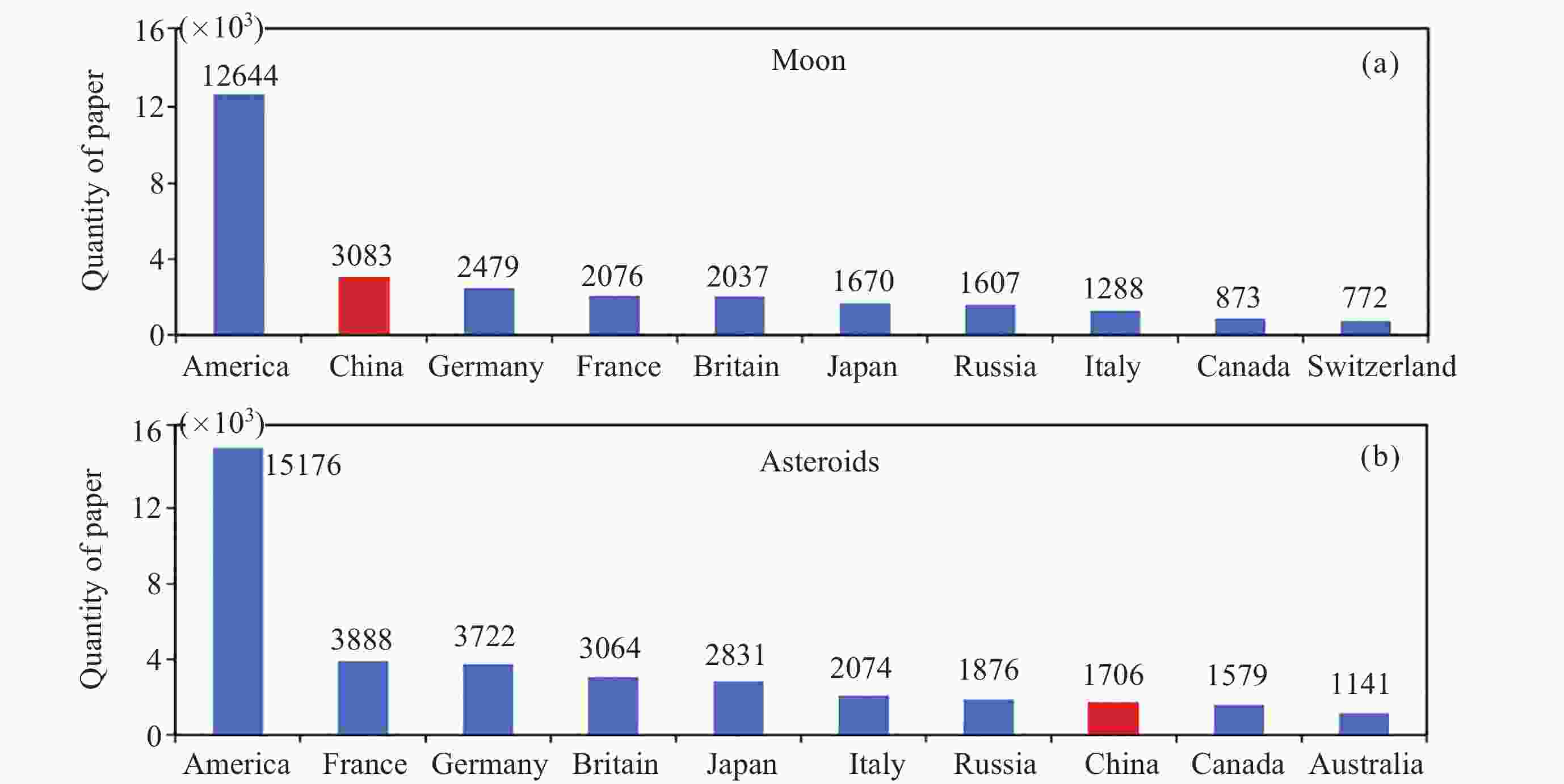
 下载:
下载:
